
SPRING SALE . 2007 / From the Series TALKING HEADS
Oil on canvas, 150 x 200 cm

SPRING SALE . 2007 / From the Series TALKING HEADS
Oil on canvas, 150 x 200 cm

NO PAIN NO BRAIN . 2013
Oil, black acrylic enamel on canvas, 300 x 400 cm
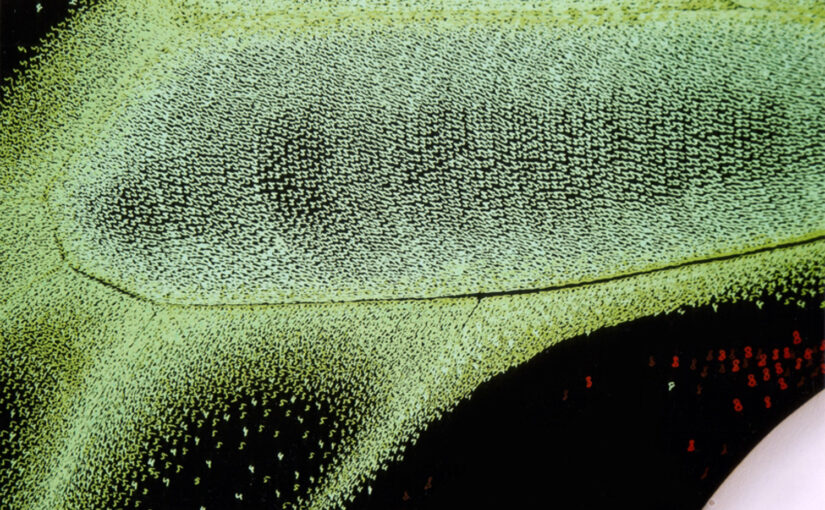
The idea of Figurative Numerical Painting has a triple origin. Firstly, it is based on the theoretical work “The Spiral-Driven Development of Colour” which develops the results of a long study of the laws of colour. Secondly, it is part of a quest for a new language in painting that would be truly contemporary. And thirdly, it is meant as an alternative to digital computer painting where images are decomposed into pixels rather than figures.
It is common knowledge that the prism divides sunlight into a spectrum. In physical optics, the length of each colour’s light wave corresponds to a certain sequence of figures. In Figurative Numerical Painting, the shortest wave length, violet, is represented by the number 1. The number 9 represents the longest wave length, purple. The complete spectral scale based on each colour’s wave length is as follows:
1 – violet
2 – blue
3 – blue-green
4 – green
5 – yellow-green
6 – yellow
7 – orange
8 – red
9 – purple
Each colour figure can develop in shades towards black or white. Thus, the entire visible part of the spectrum can be translated into figures that allow a refinement of colour, i.e. it is possible to paint in numbers.
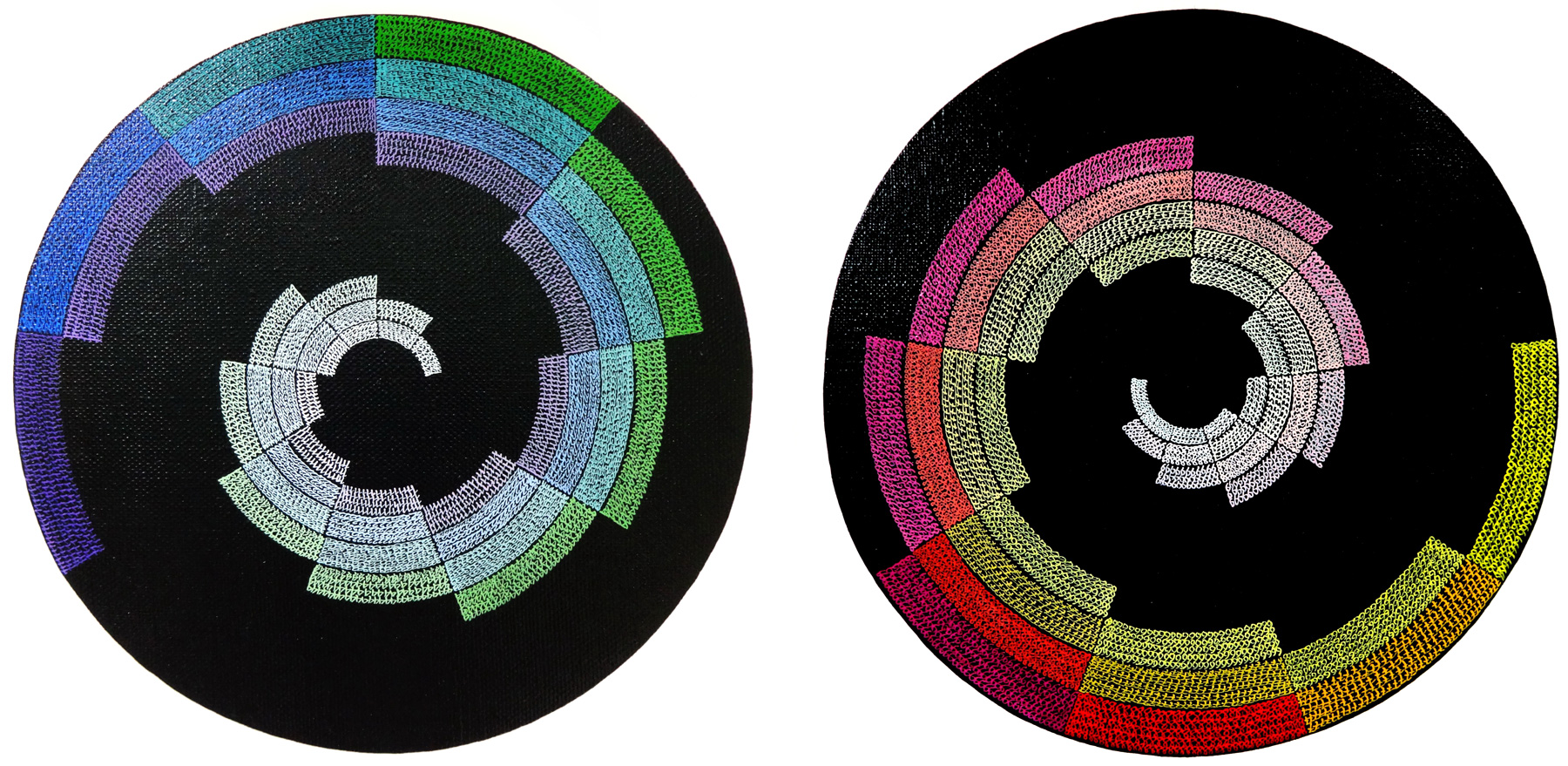
Smoke is one of the most intricate shapes. It is the image of unrest, instability and freedom due to its volatile and even turbulent features. By replacing each minute particle of smoke with monochrome figures, each of which constitute a fraction of the entire form, I explore new means of organizing the compositional space of painting.
Beetles and butterflies participate in the realm of colour. The refraction of sunlight in the feathers of exotic birds and the wings of polychrome butterflies is translated into figures, allowing these shapes to be articulated in a newly structured space.

BUTTERFLY #5 . 2008
Tempera, black acrylic on canvas, 120 x 160 cm

BUTTERFLY #5 . 2008 / Fragment
Tempera, black acrylic on canvas, 120 x 160 cm

BUTTERFLY #5 . 2008 / Fragment
Tempera, black acrylic on canvas, 120 x 160 cm
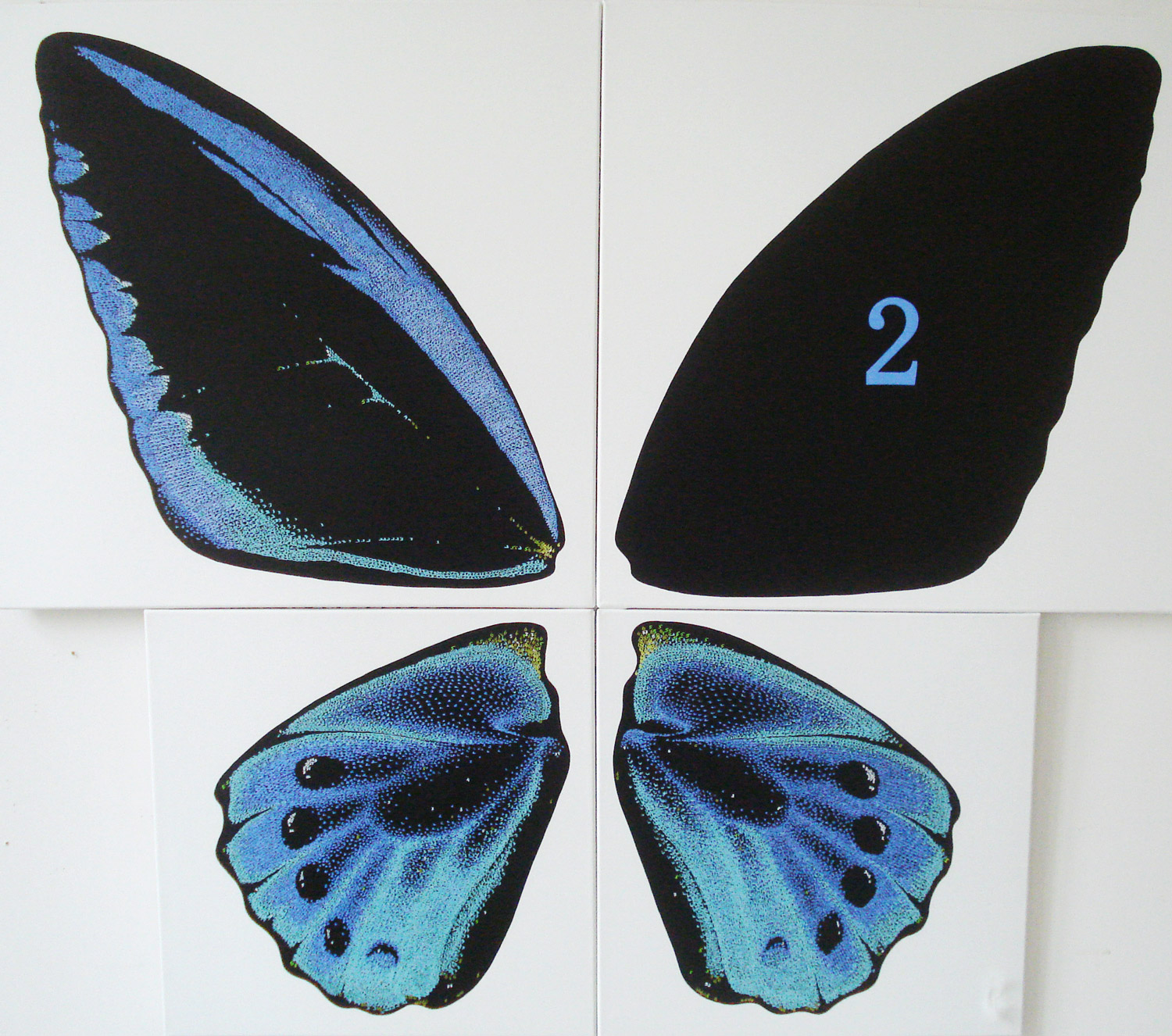
BLUE BUTTERFLY WITH BLACK SPOTS . 2008
Tempera, black acrylic on canvas, 140 x 160 cm
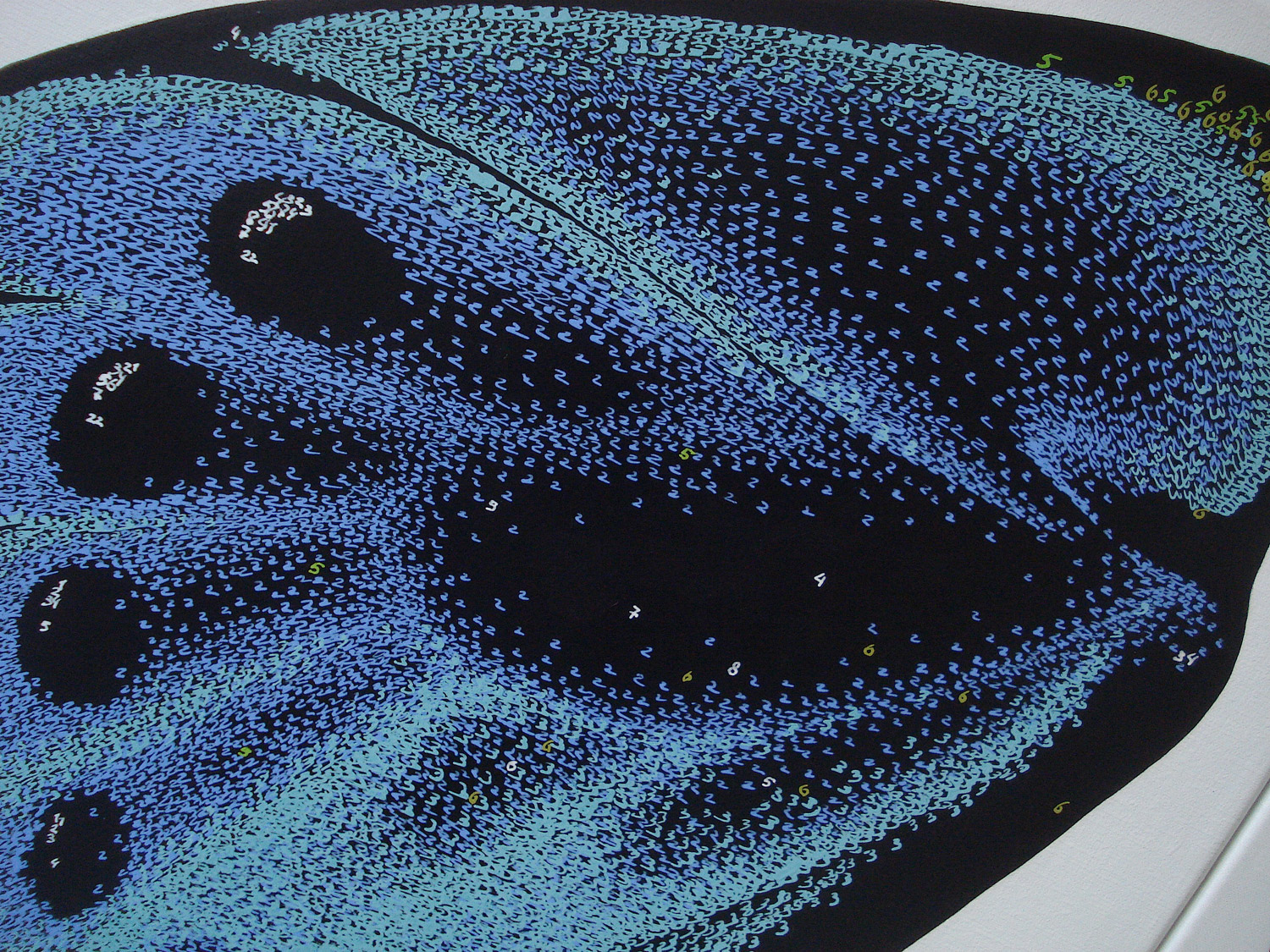
BLUE BUTTERFLY WITH BLACK SPOTS . 2008 / Fragment
Tempera, black acrylic on canvas, 140 x 160 cm

BROWN BUTTERFLY . 2008
Tempera, black acrylic on MDF, 175 x 175 cm
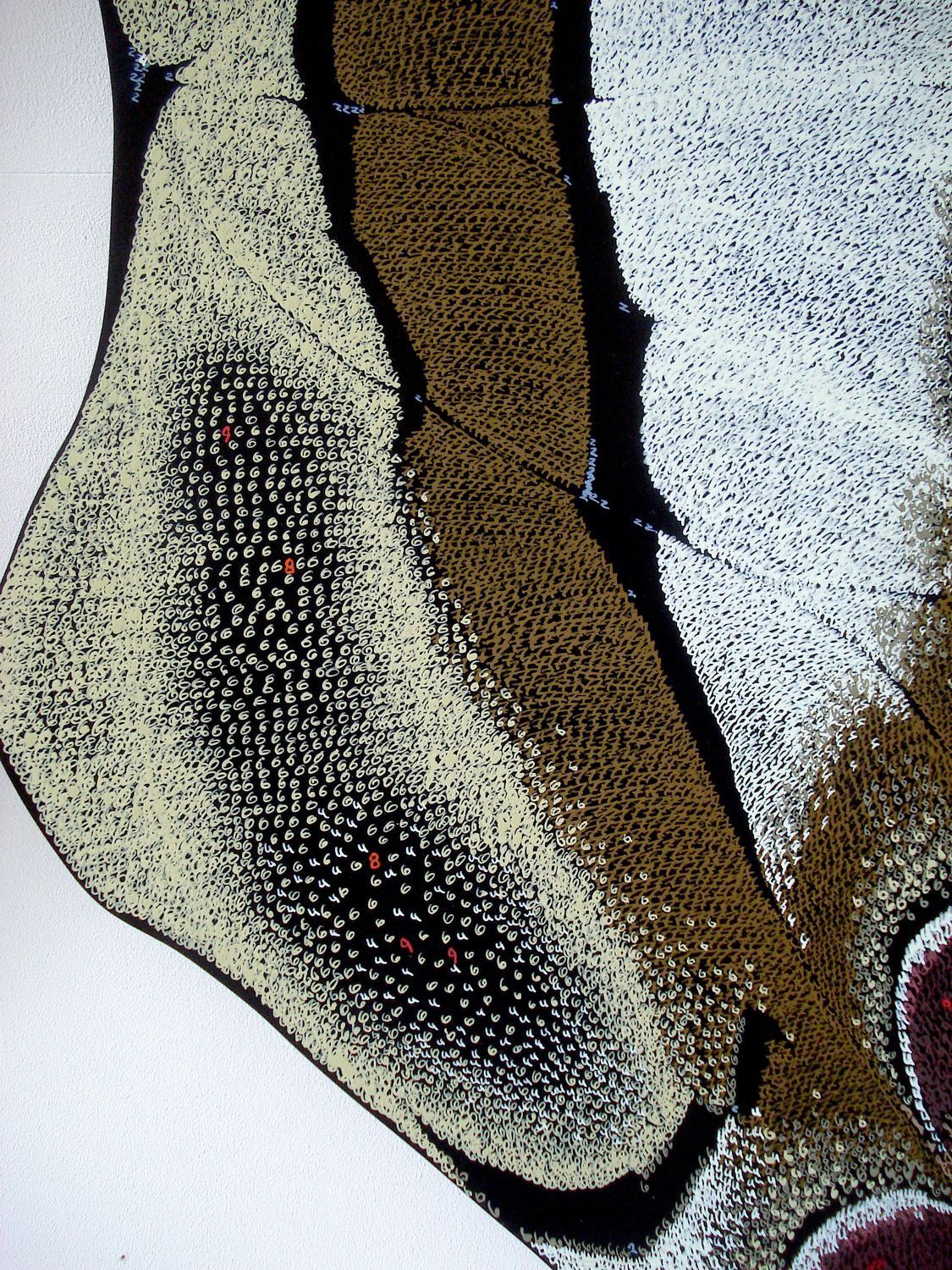
BROWN BUTTERFLY . 2008 / Fragment
Tempera, black acrylic on MDF, 175 x 175 cm
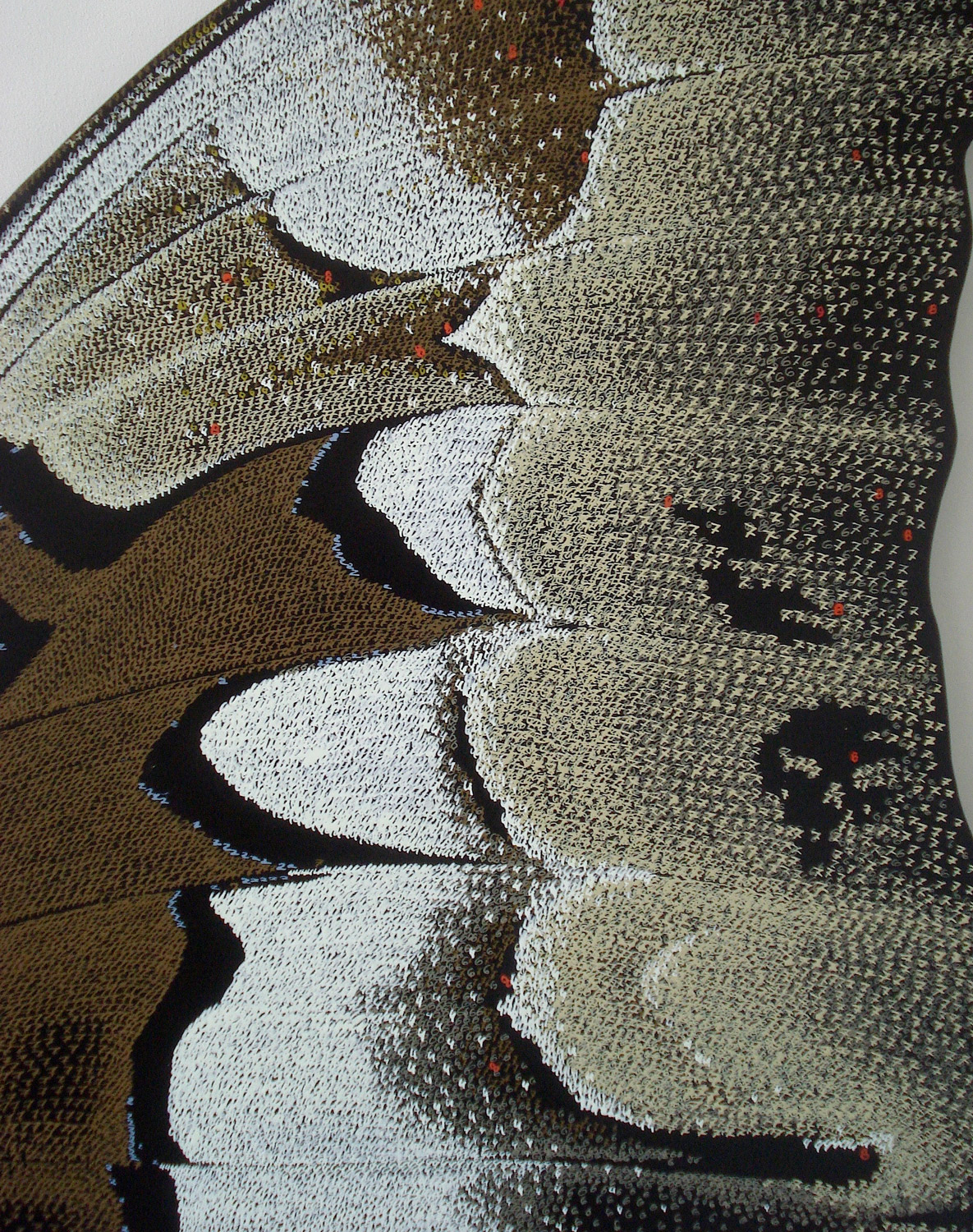
BROWN BUTTERFLY . 2008 / Fragment
Tempera, black acrylic on MDF, 175 x 175 cm
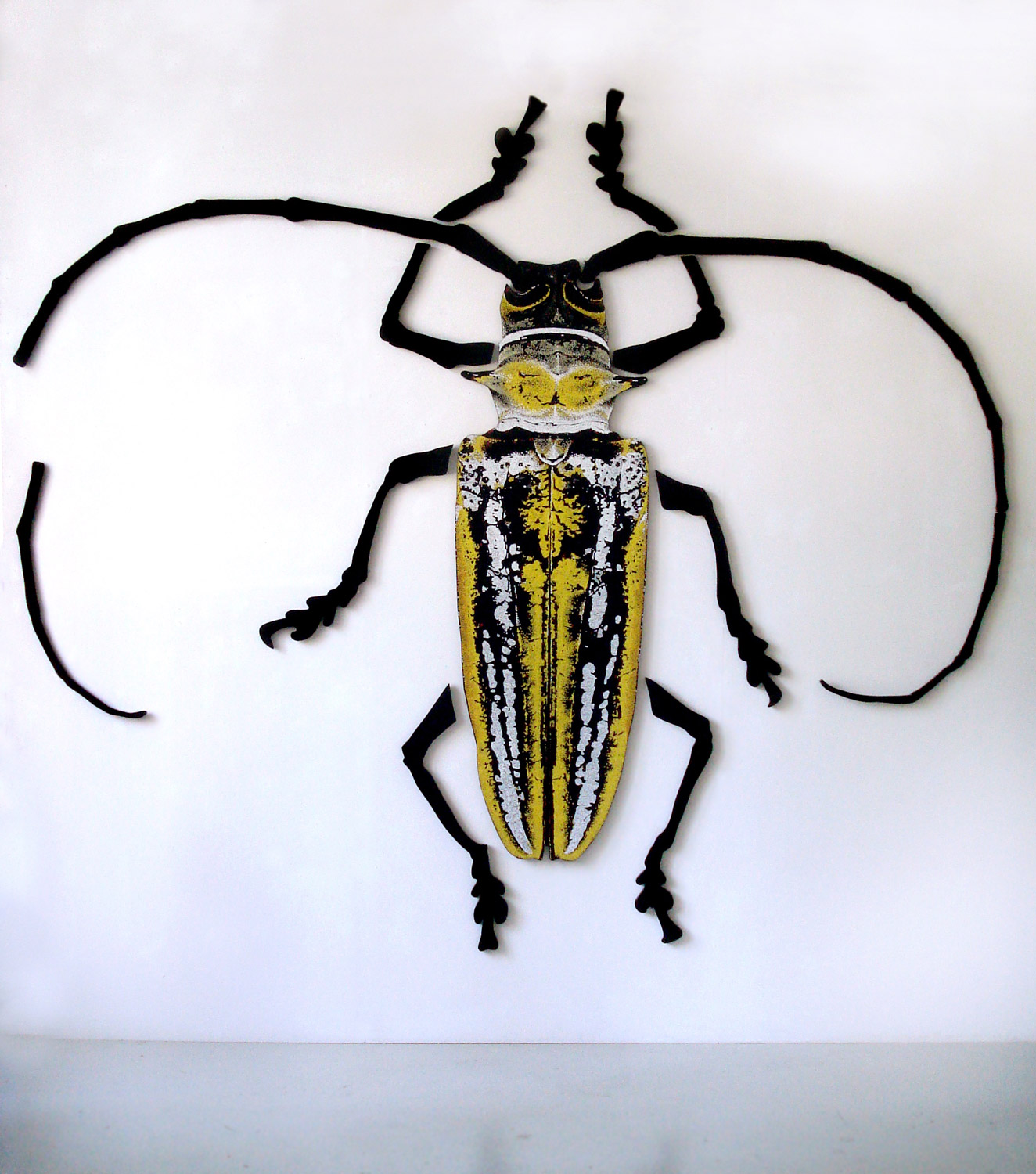
YELLOW BEETLE . 2009
Tempera, black acrylic on MDF, 240 x 300 cm
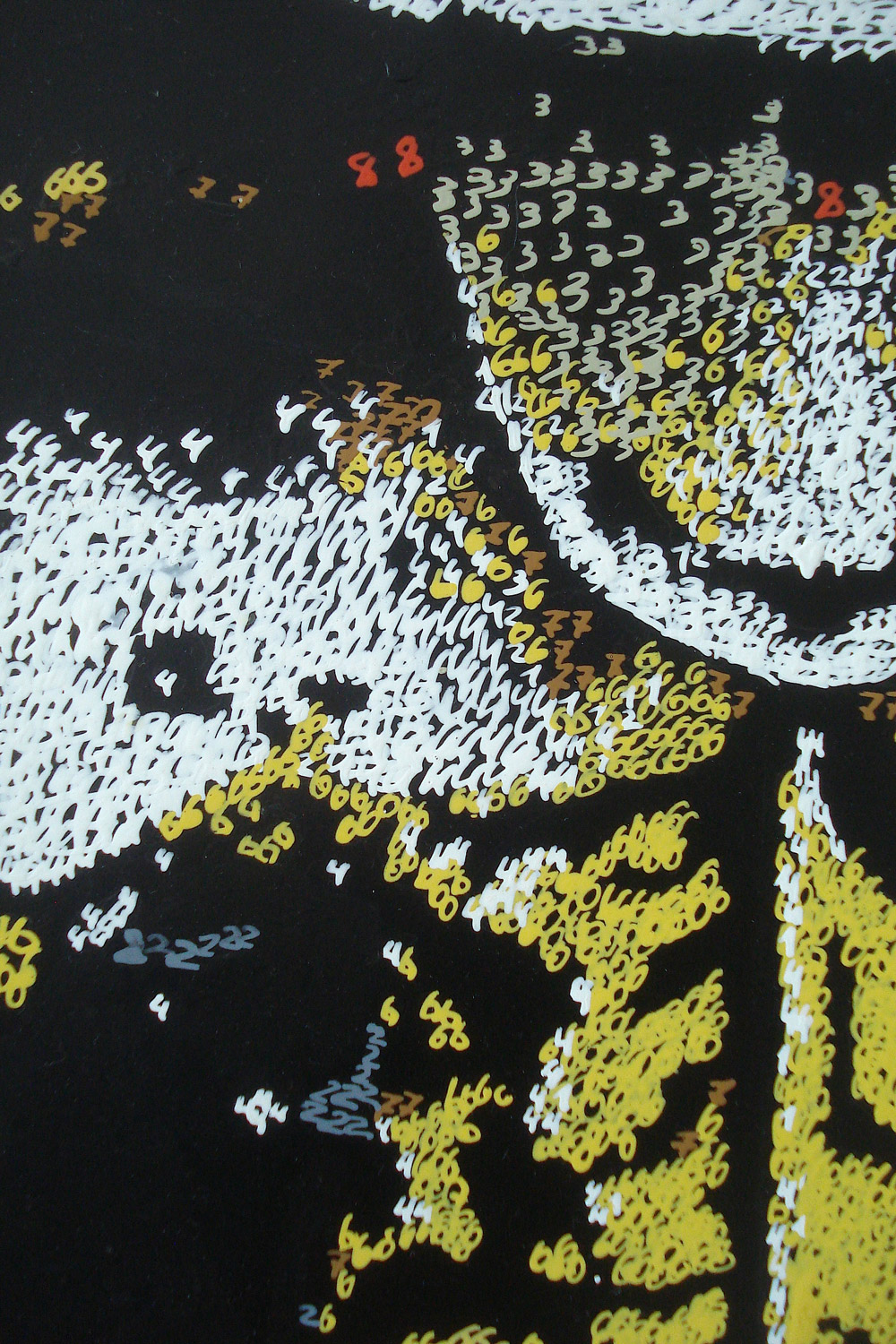
YELLOW BEETLE . 2009 / Fragment
Tempera, black acrylic on MDF, 240 x 300 cm

YELLOW BEETLE . 2009 / Fragment
Tempera, black acrylic on MDF, 240 x 300 cm
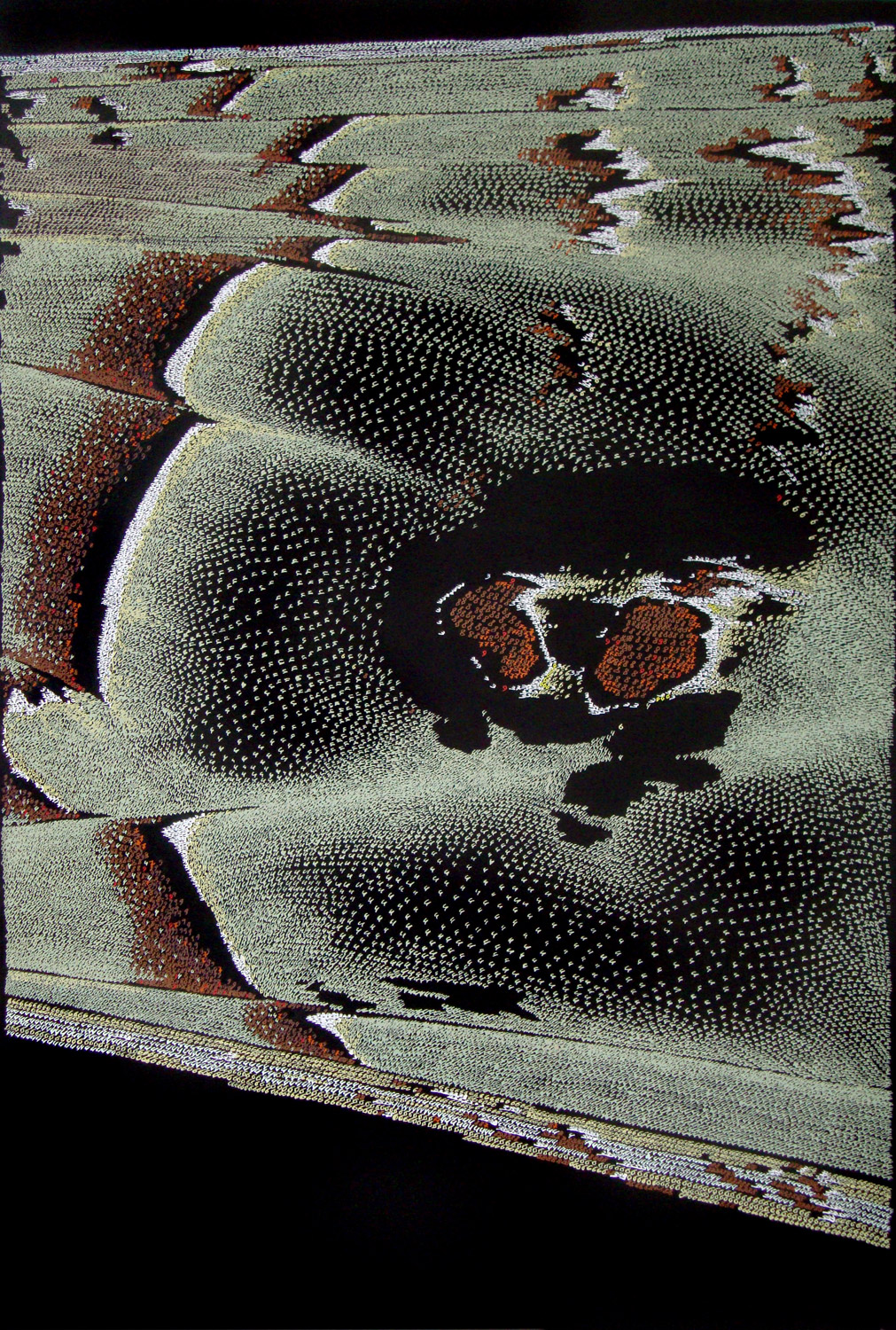
BROWN MOTH . 2010
Tempera, black acrylic on canvas, 150 x 100 cm
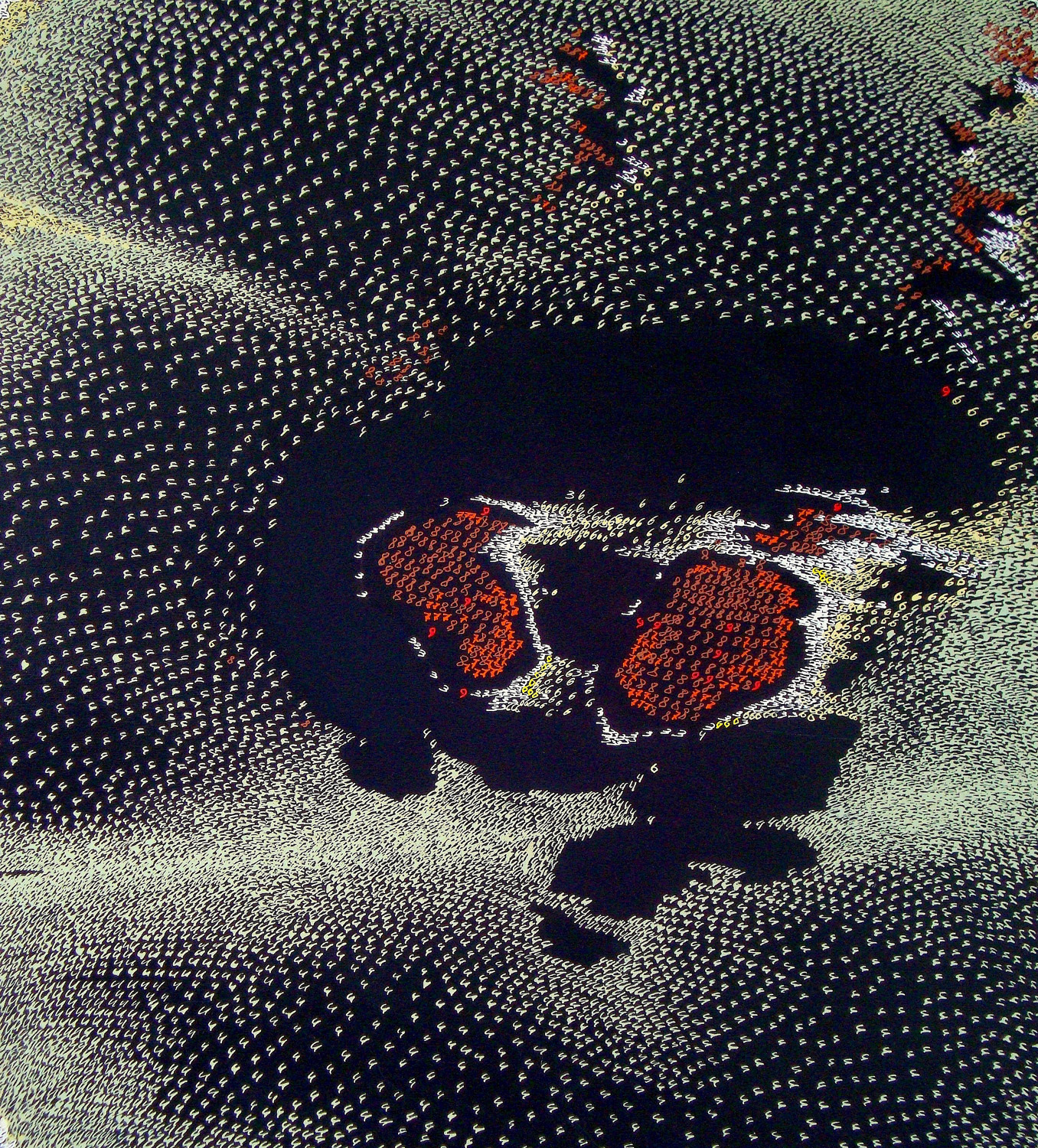
BROWN MOTH . 2010 / Fragment
Tempera, black acrylic on canvas, 150 x 100 cm

BLUE MOTH . 2008
Tempera, black acrylic on canvas, 150 x 100 cm
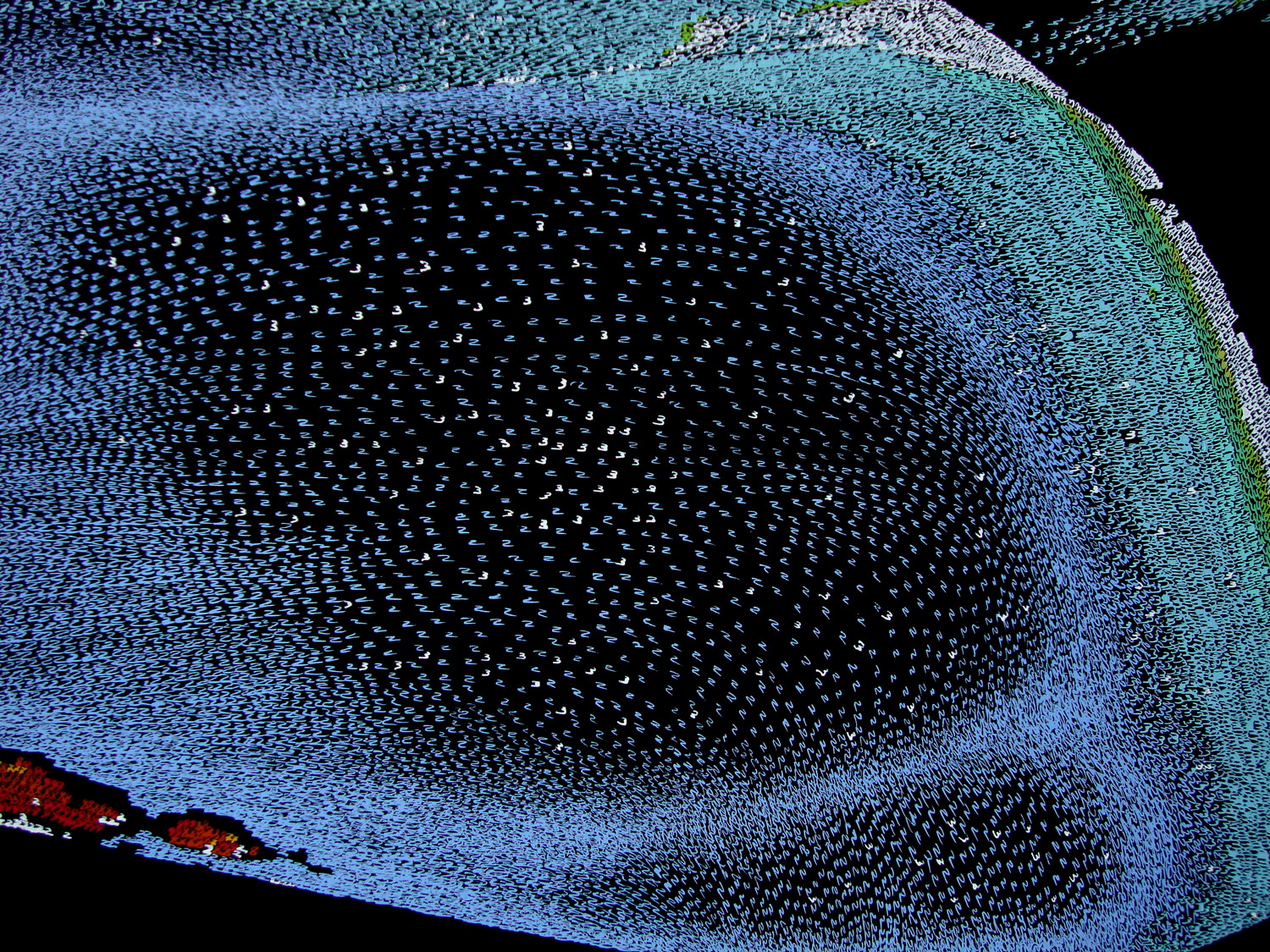
BLUE MOTH . 2008 / Fragment
Tempera, black acrylic on canvas, 150 x 100 cm
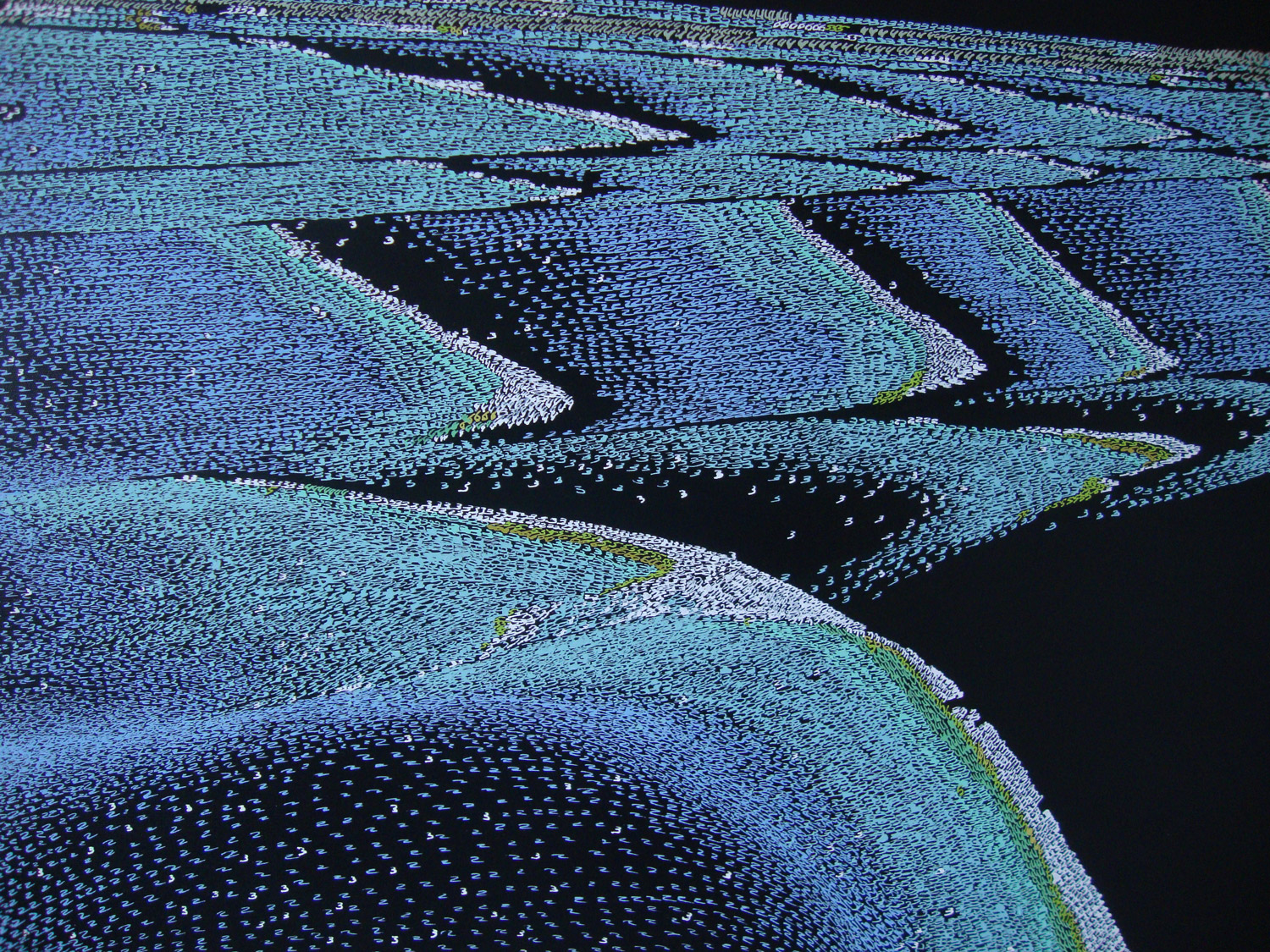
BLUE MOTH . 2008 / Fragment
Tempera, black acrylic on canvas, 150 x 100 cm

SMOKE #1 . 2008
Tempera, black acrylic on canvas, 150 x 100 cm

SMOKE #1 . 2008 / Fragment
Tempera, black acrylic on canvas, 150 x 100 cm
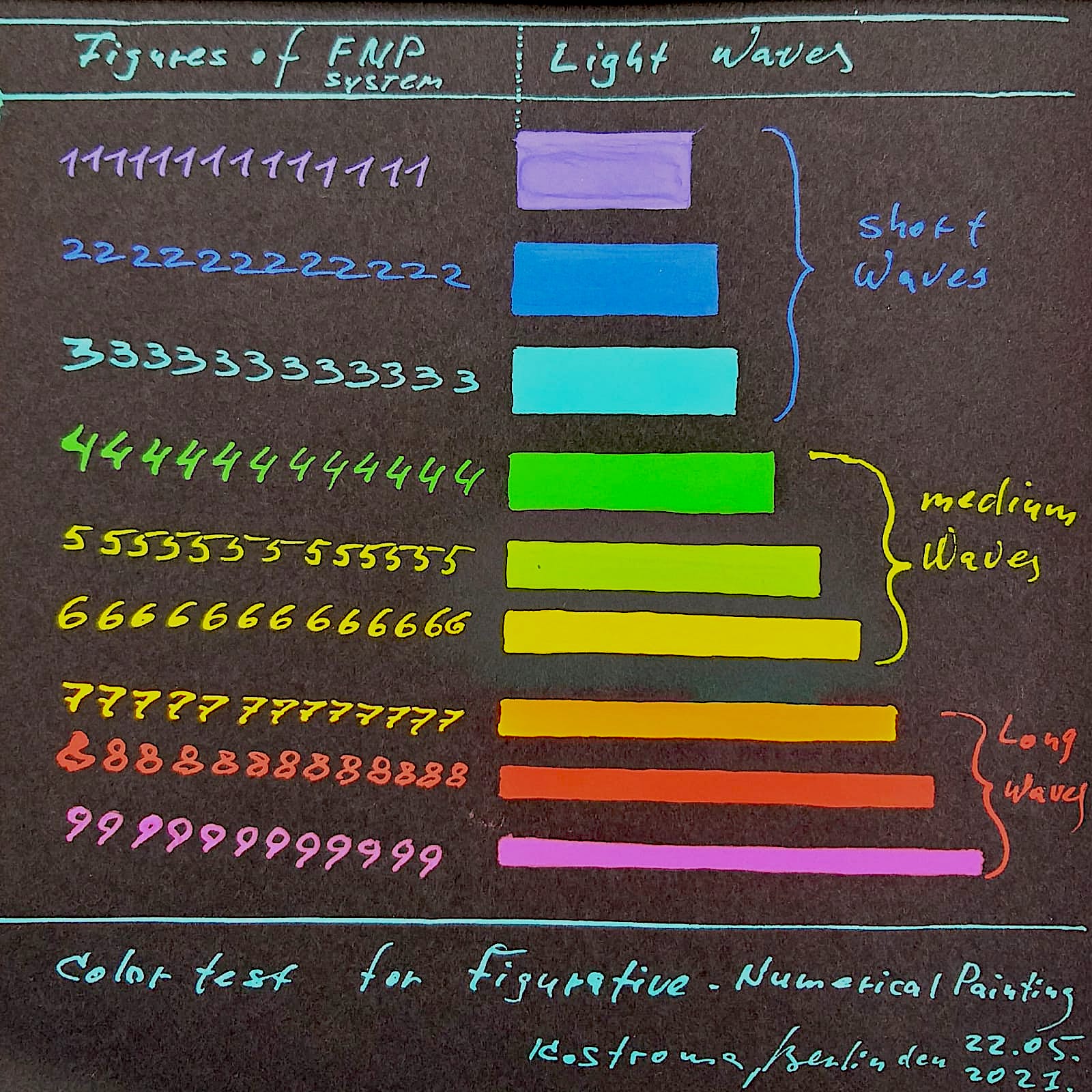
FNP SPECTRAL SCALE / Length of Light Waves . 2021
Sketch, tempera on paper
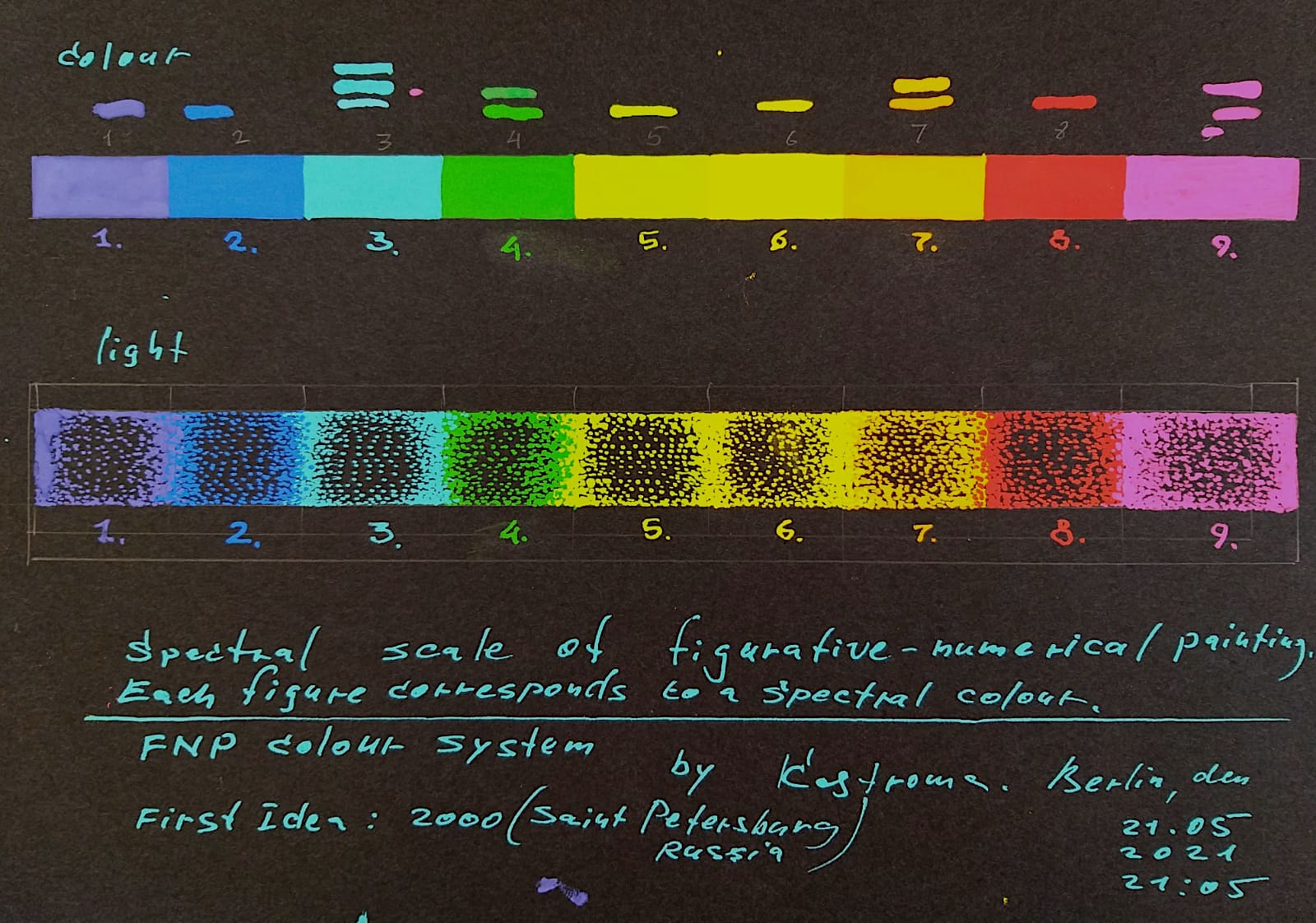
FNP SPECTRAL SCALE . 2021
Sketch, tempera on paper
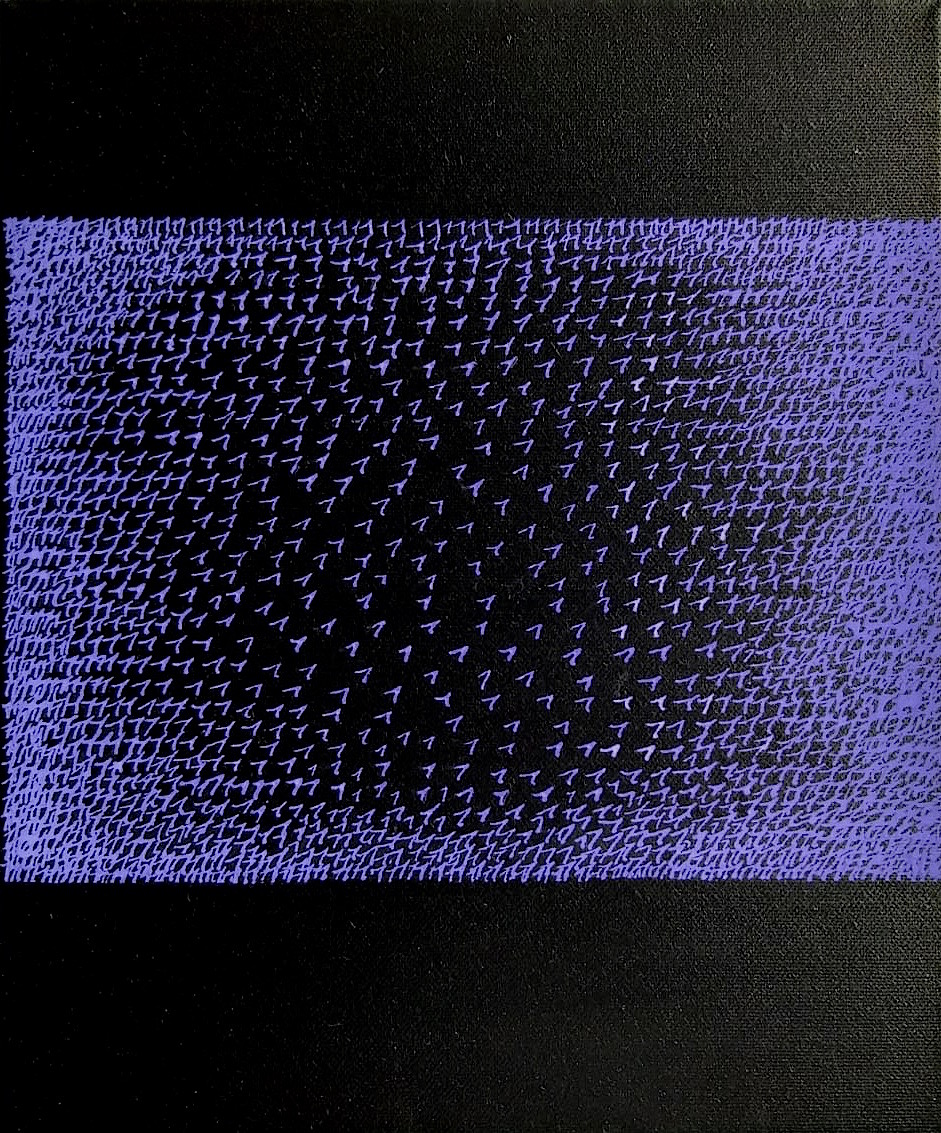
FNP SPECTRAL SCALE . 1 – Violet Color . 2021
Tempera on canvas, 30 x 25 cm

FNP SPECTRAL SCALE . 2 – Blue Color . 2021
Tempera on canvas, 30 x 25 cm
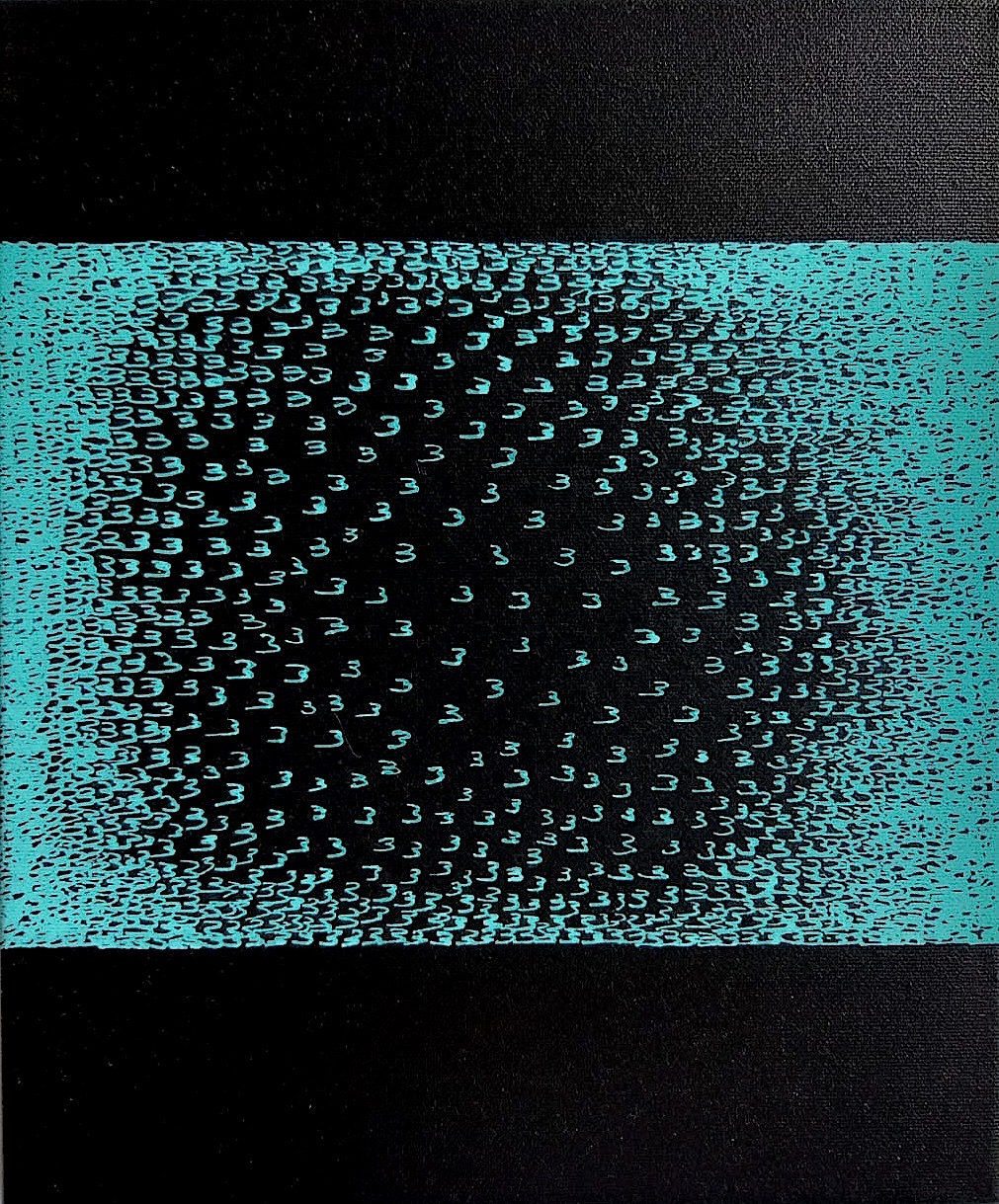
FNP SPECTRAL SCALE . 3 – Blue-Green Color . 2021
Tempera on canvas, 30 x 25 cm
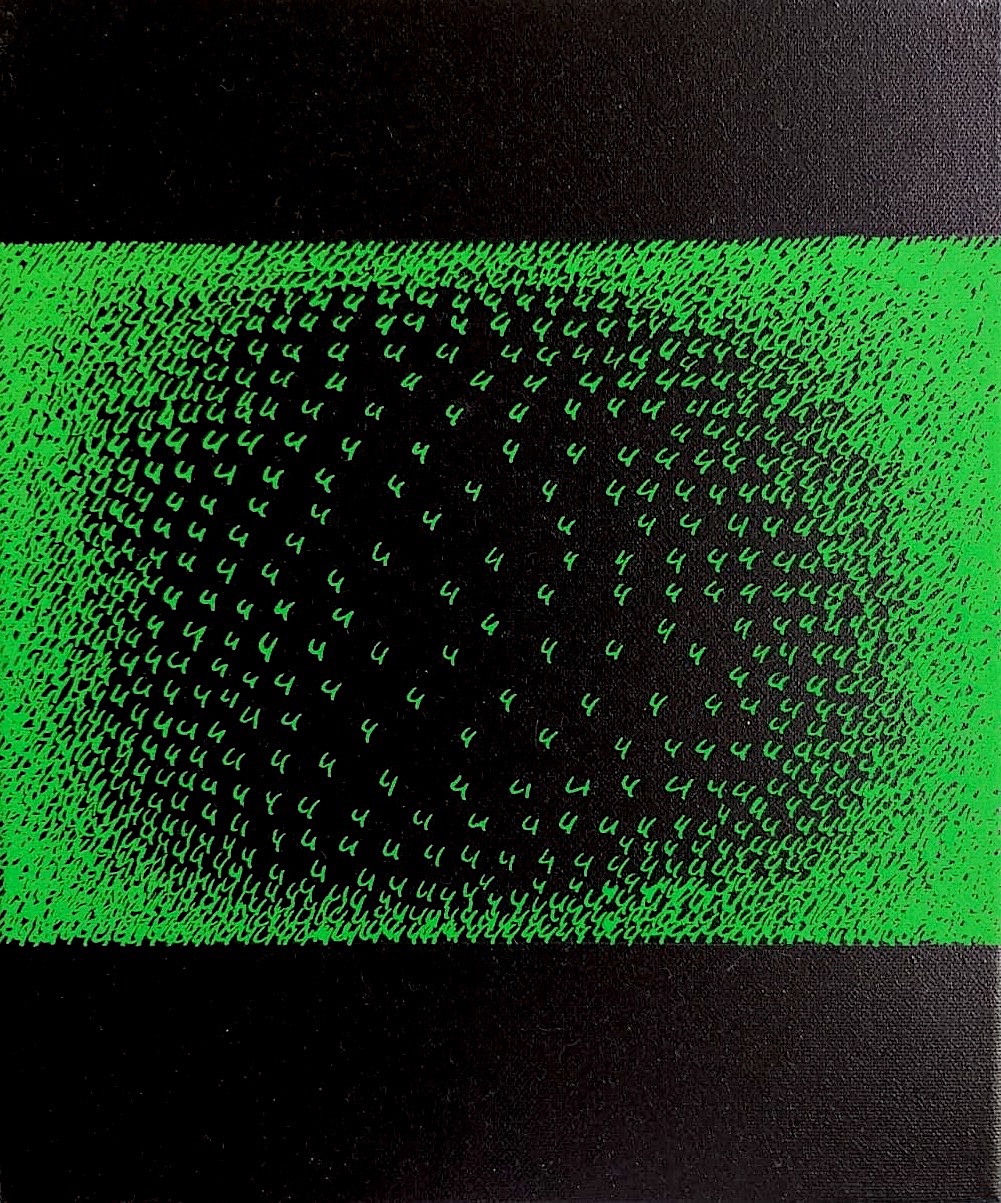
FNP SPECTRAL SCALE . 4 – Green Color . 2021
Tempera on canvas, 30 x 25 cm
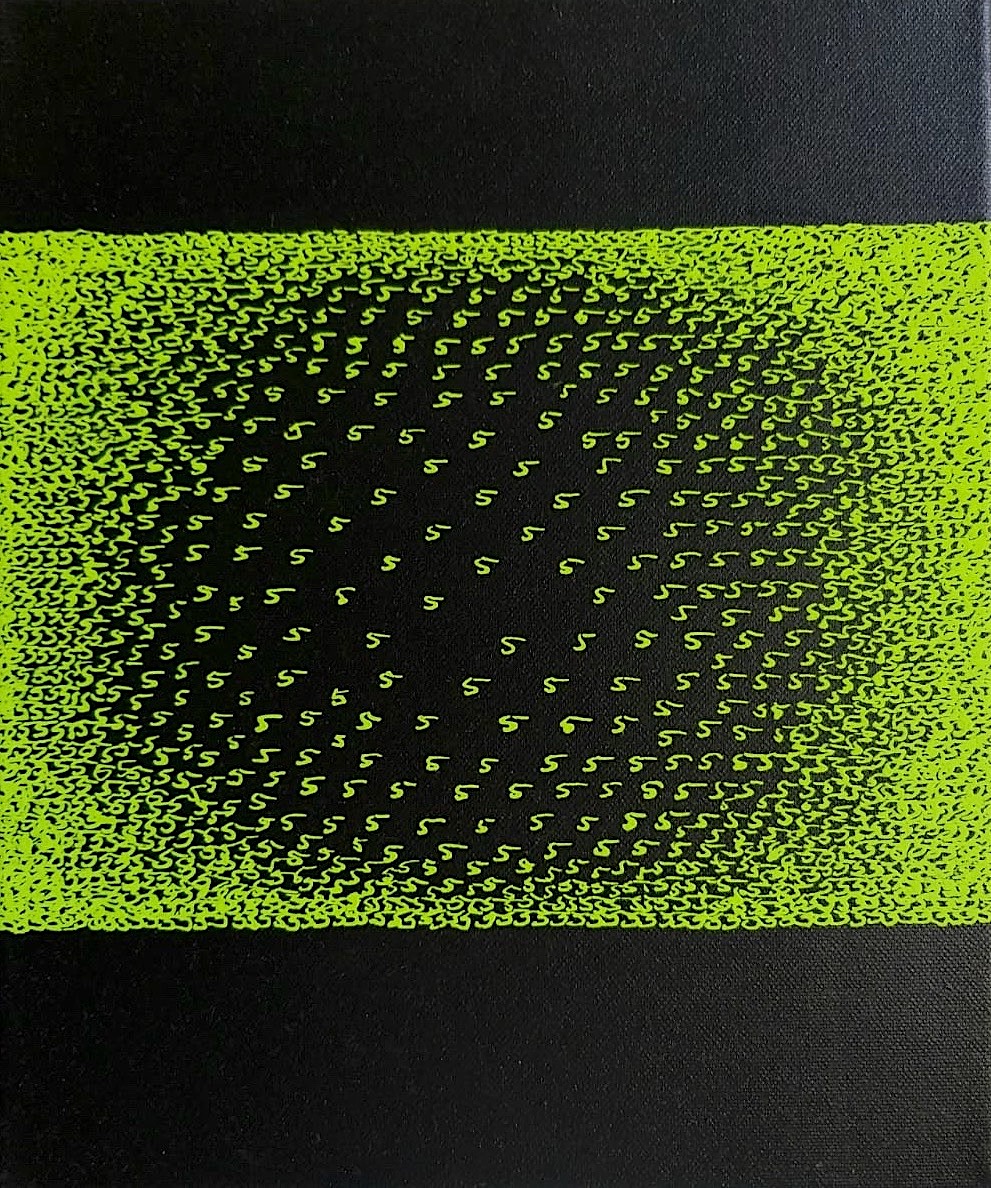
FNP SPECTRAL SCALE . 5 – Yellow-Green Color . 2021
Tempera on canvas, 30 x 25 cm
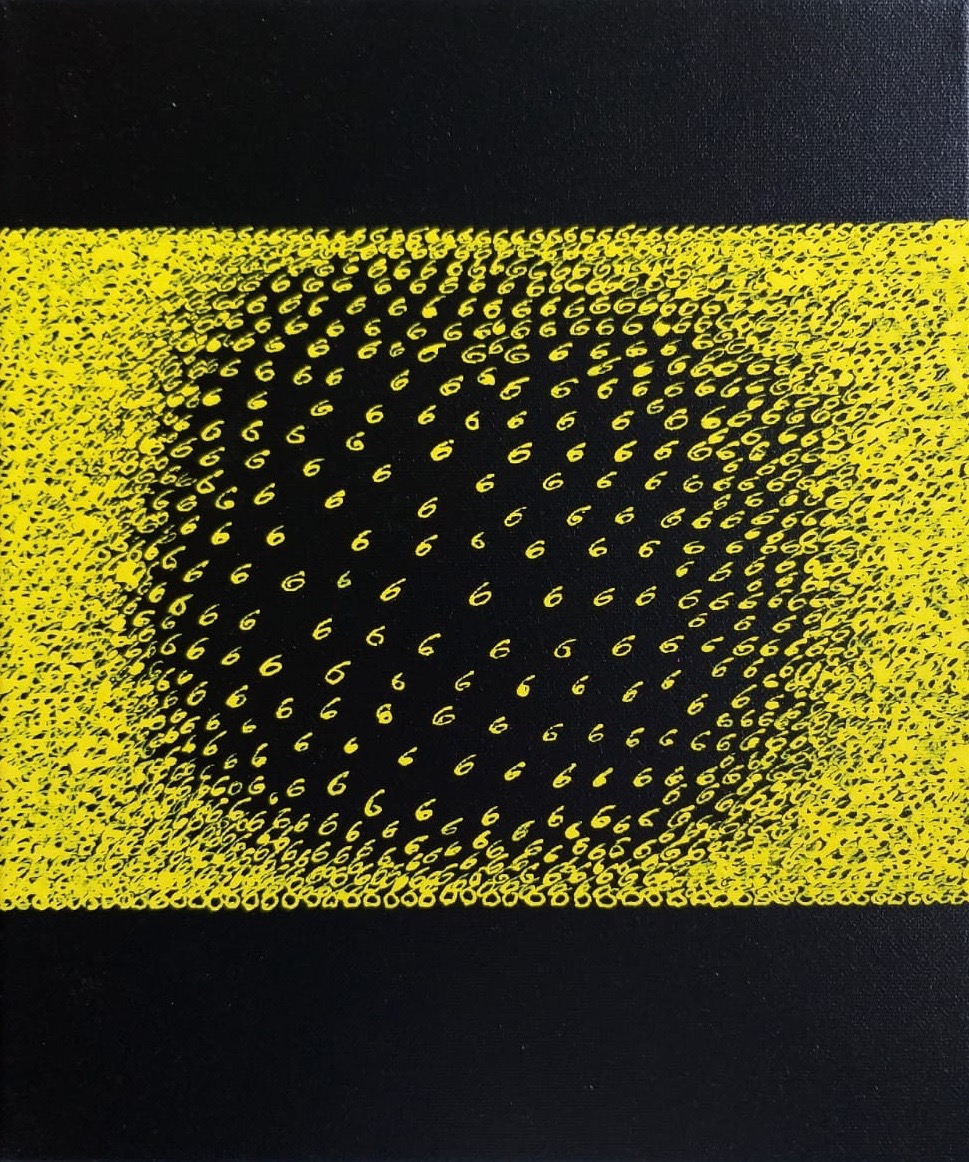
FNP SPECTRAL SCALE . 6 – Yellow Color . 2021
Tempera on canvas, 30 x 25 cm

FNP SPECTRAL SCALE . 7 – Orange Color . 2021
Tempera on canvas, 30 x 25 cm
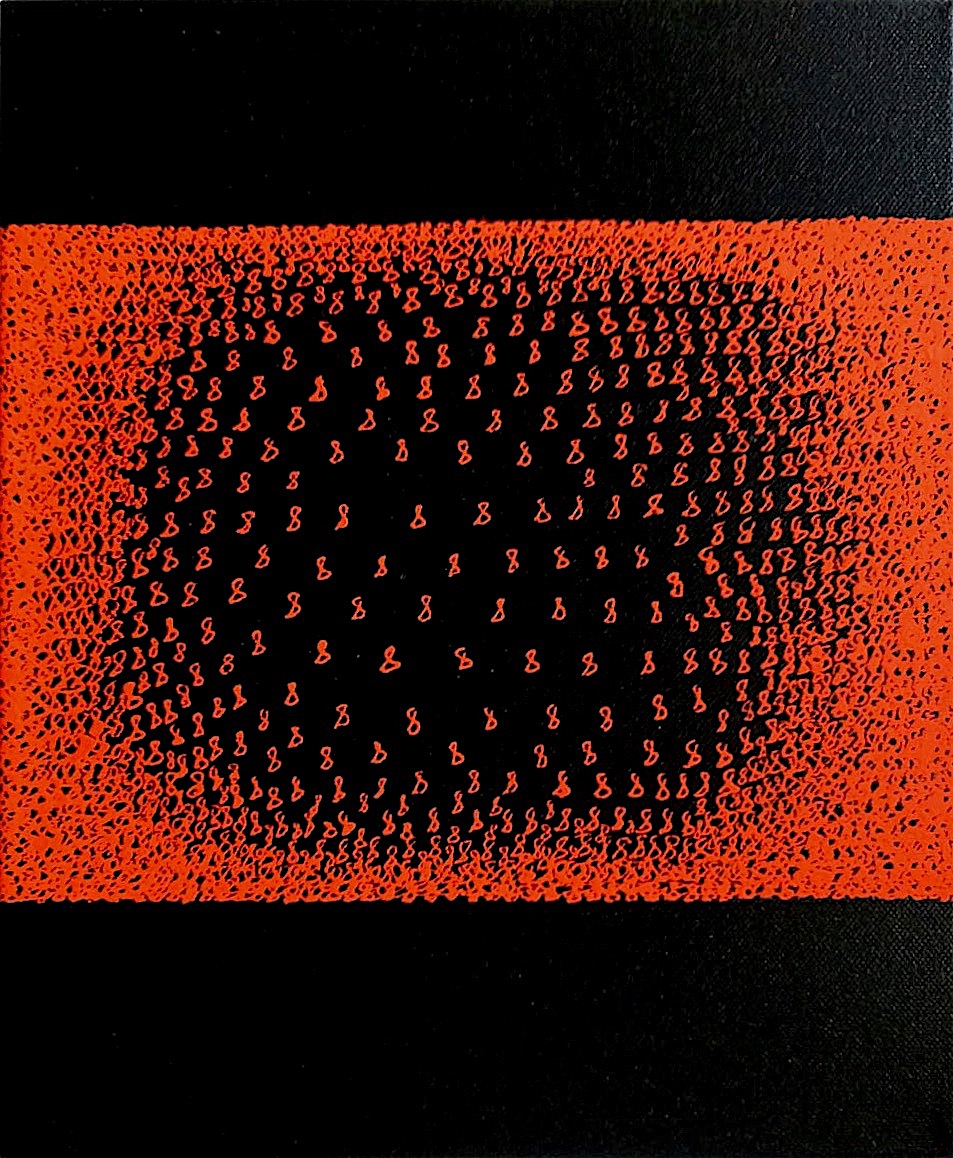
FNP SPECTRAL SCALE . 8 – Red Color . 2021
Tempera on canvas, 30 x 25 cm
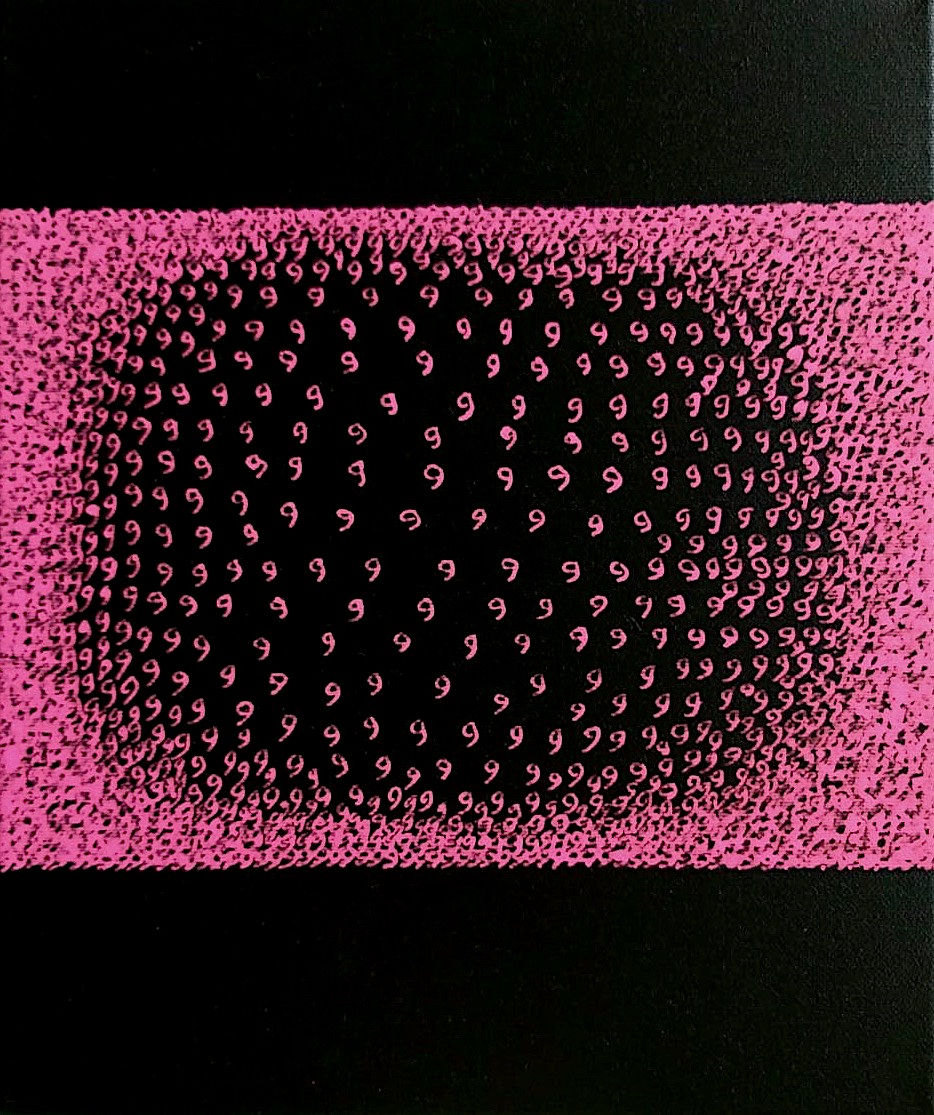
FNP SPECTRAL SCALE . 9 – Purple Color . 2021
Tempera on canvas, 30 x 25 cm


NO PAIN NO BRAIN . 2013
Oil, black acrylic enamel on canvas, 300 x 400 cm

BLACK SHADOW OF PUSSY CAT . 2012
Oil, black acrylic enamel on Fabriano Accademia paper, 250 x 300 cm

ANTICIPATION . 2011
Oil, black acrylic enamel on canvas, 300 x 600 cm
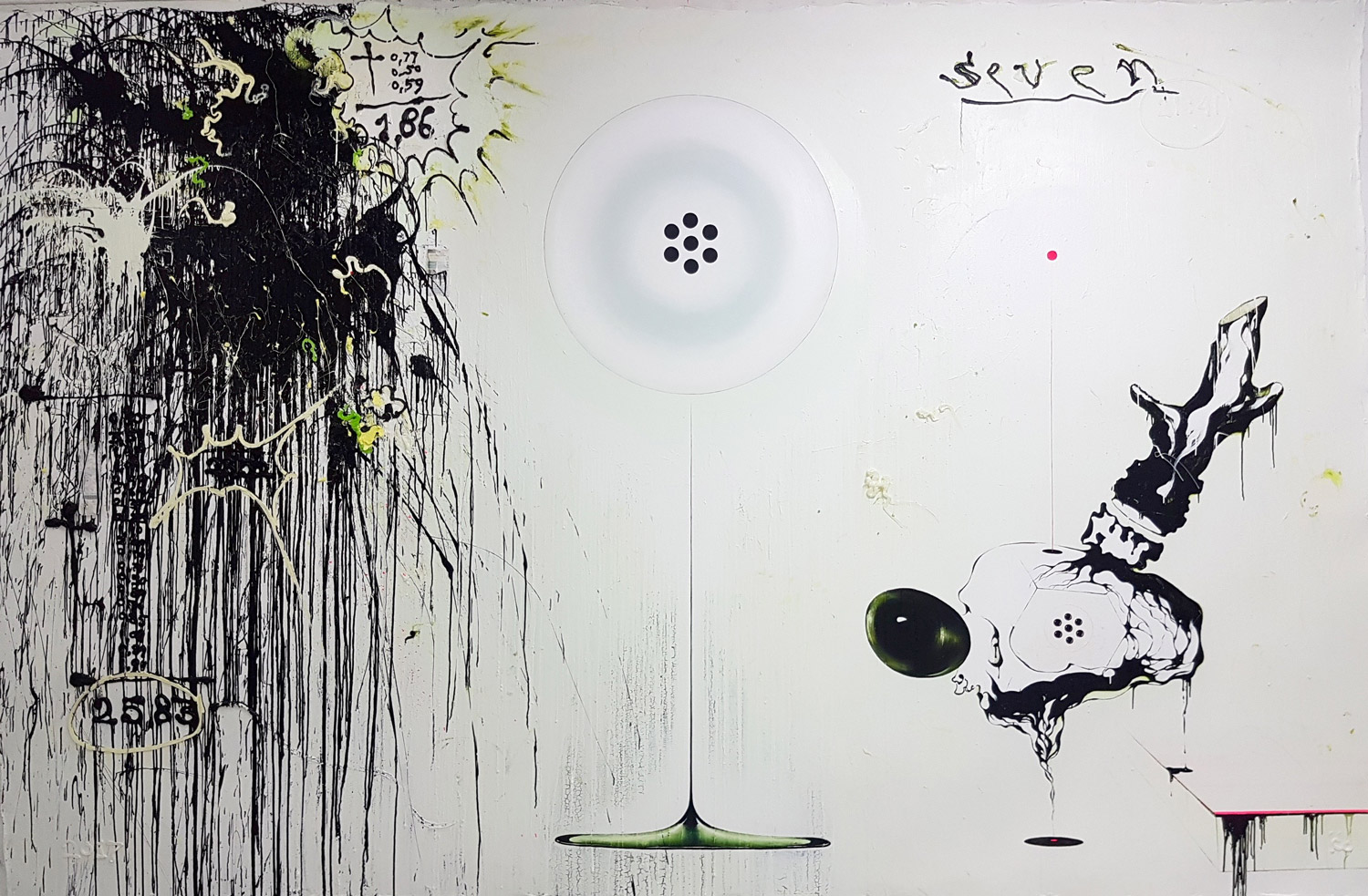
SEVEN. MENTAL CREATION OF MATTER . 2017
Oil, black acrylic enamel on canvas, 300 x 480 cm
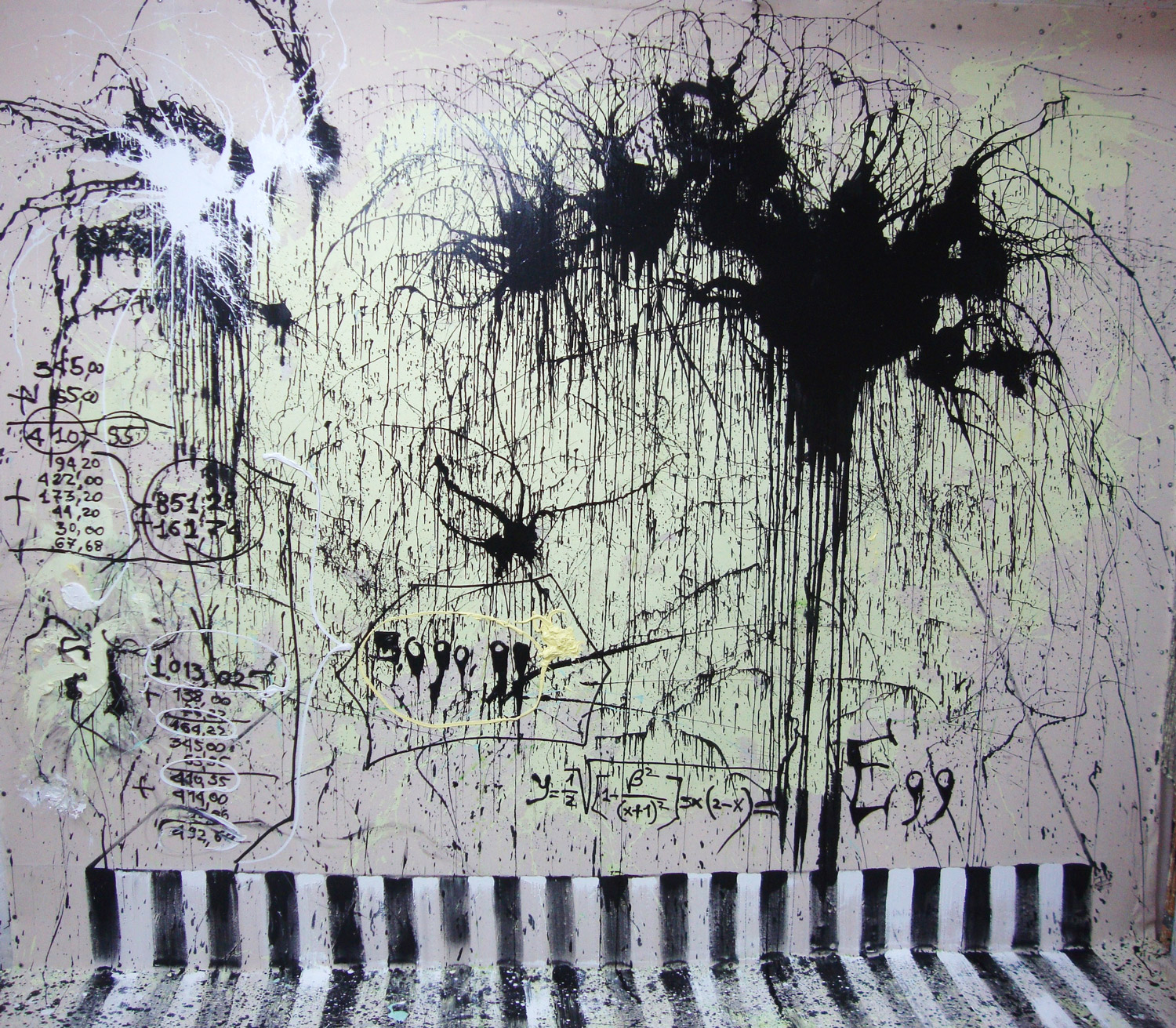
FORMULA OF THE EGG . 2013
Oil, black acrylic enamel on canvas, 300 x 400 cm
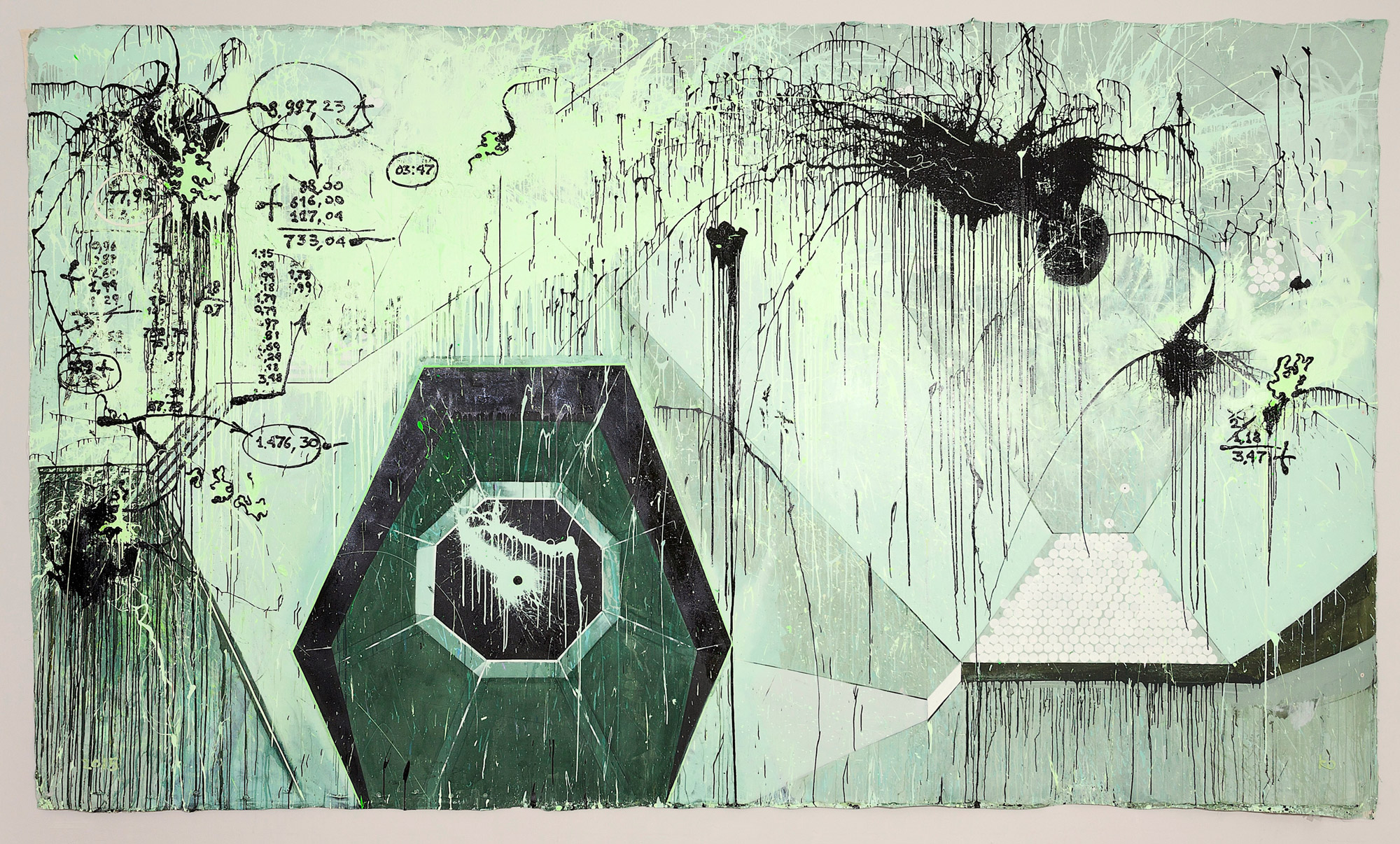
MEMBRANE . 2015
Oil, black acrylic enamel on canvas, 300 x 500 cm
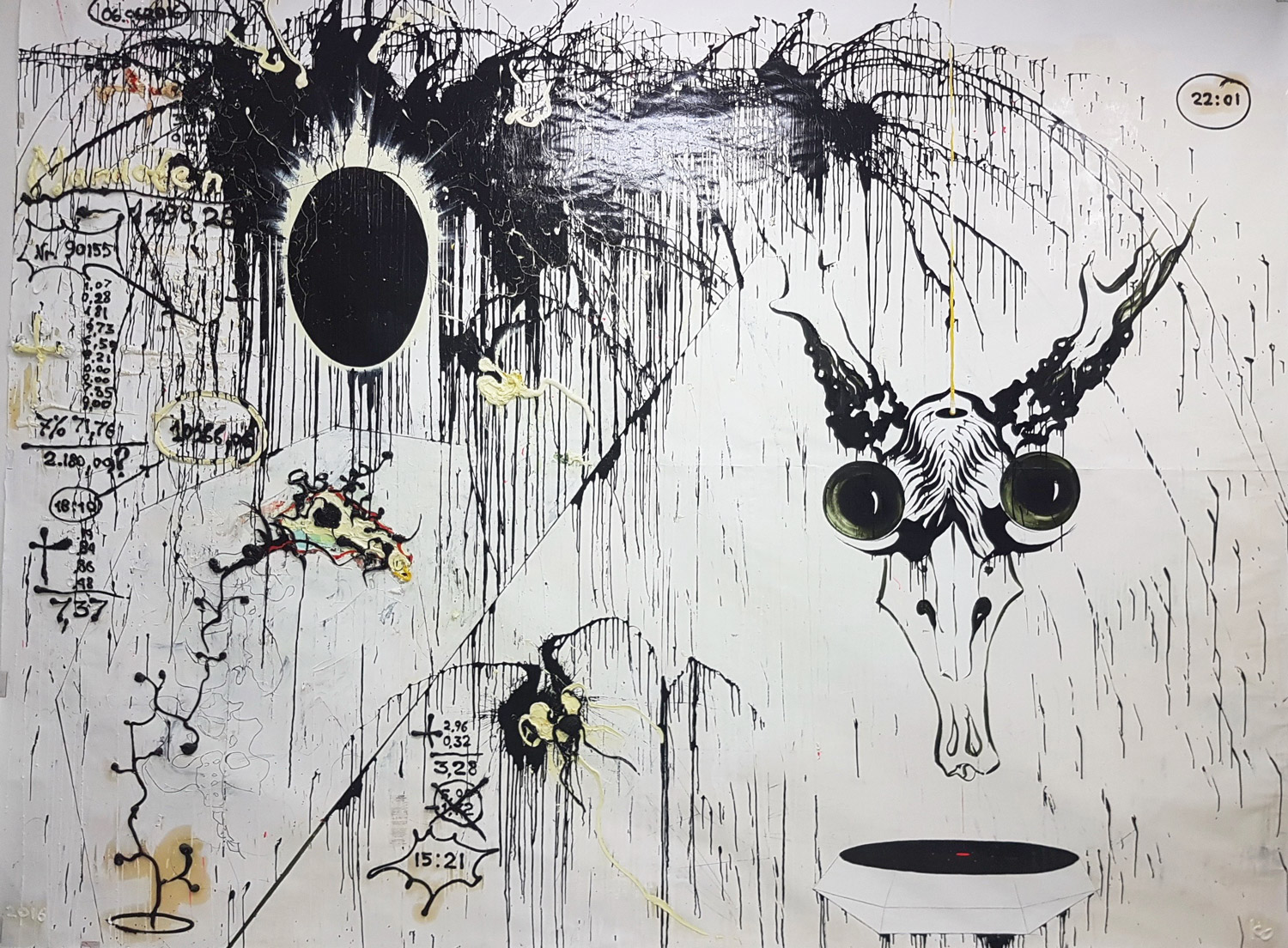
BIG EYES . 2016
Oil, black acrylic enamel on Fabriano Accademia paper, 300 x 450 cm
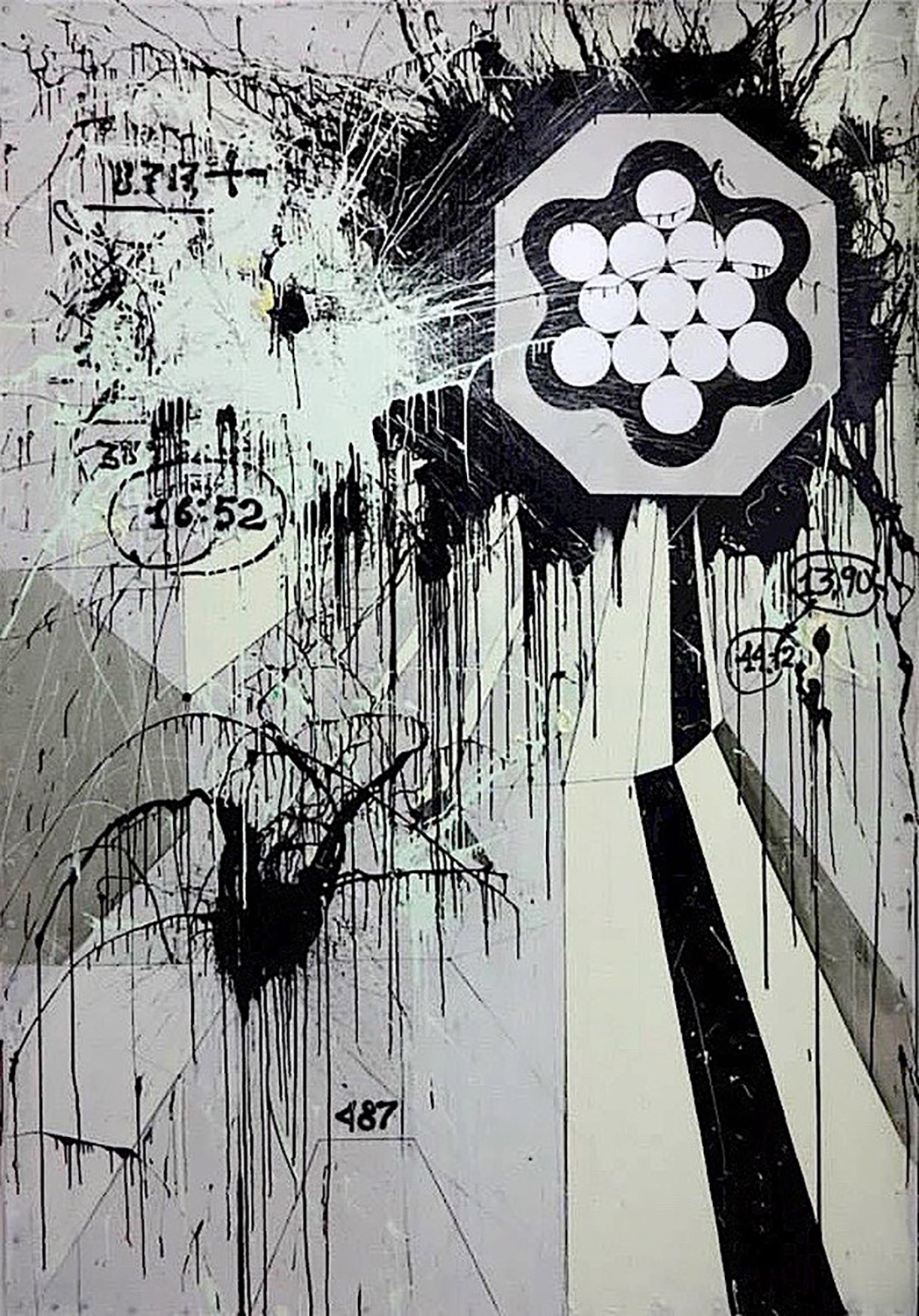
CHAOS VS ORDER . 2014
Oil, black acrylic enamel on canvas, 300 x 200 cm
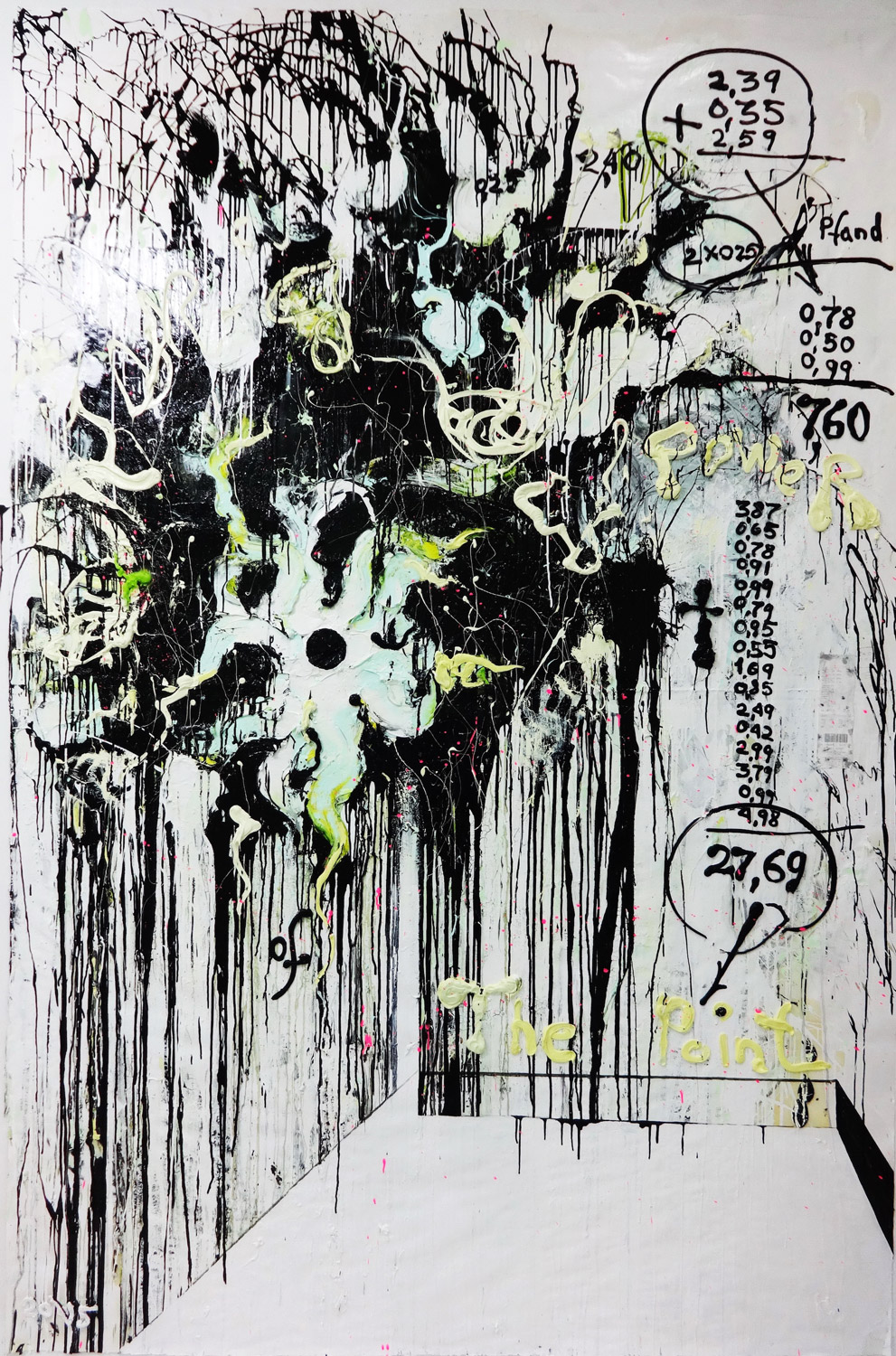
POWER OF THE POINT . 2015
Oil, black acrylic enamel on Fabriano Accademia paper, 300 x 200 cm
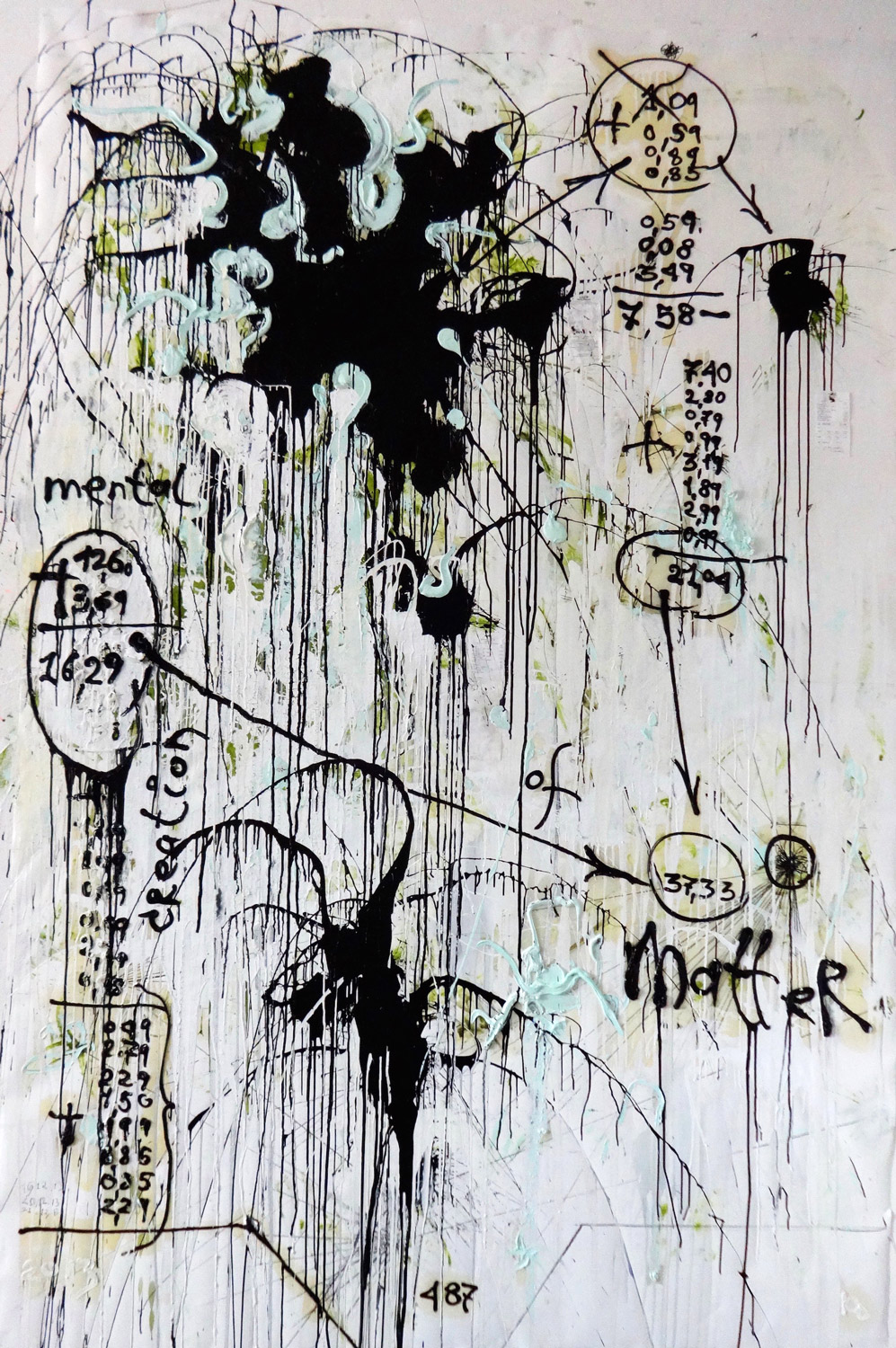
MENTAL CREATION OF MATTER . 2013
Oil, black acrylic enamel on Fabriano Accademia Paper, 300 x 200 cm
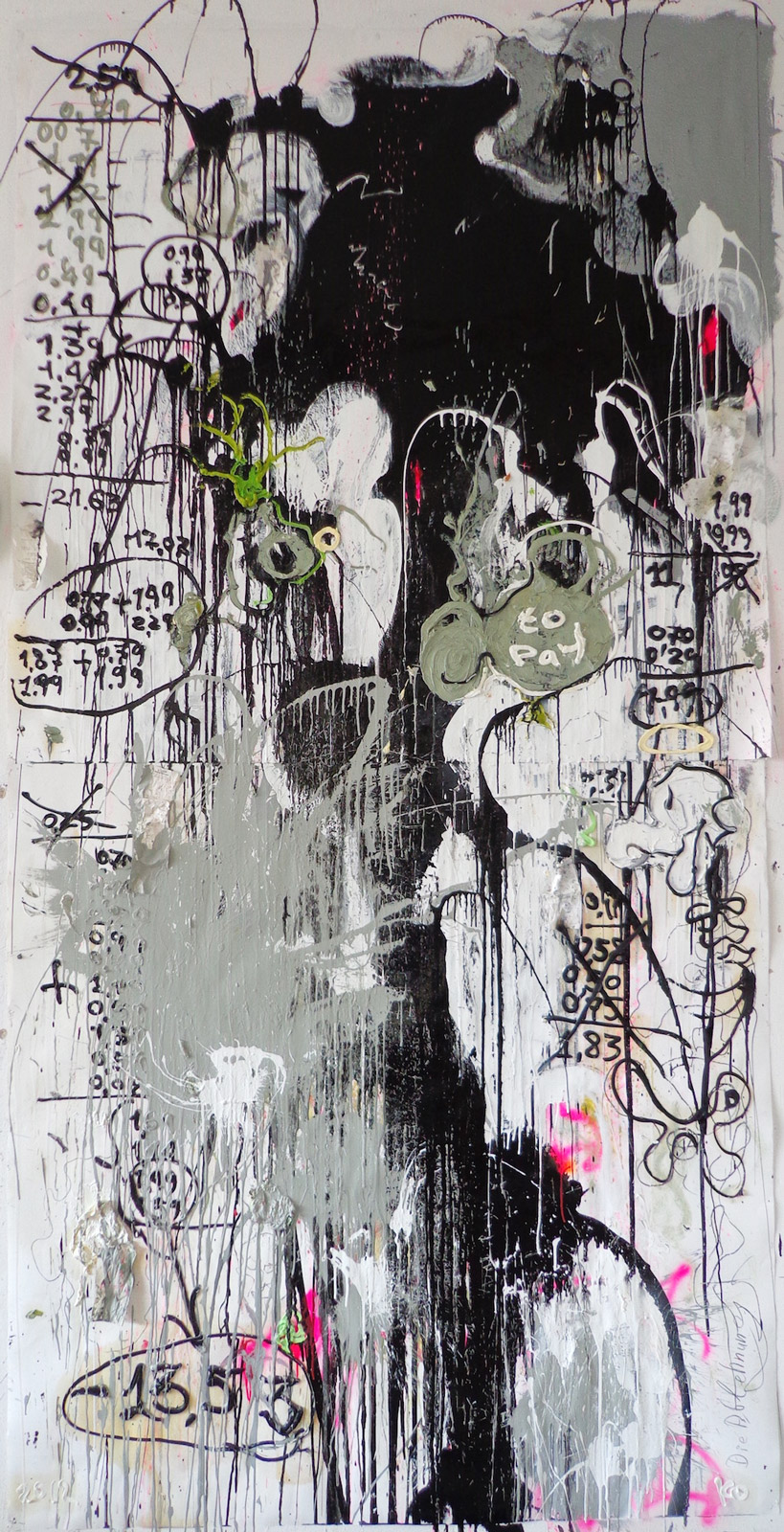
TO PAY. BLACK TREE . 2012
Oil, black acrylic enamel on Fabriano Accademia paper, 300 x 150 cm

BANANAS ONLY . 2013
Oil, black acrylic enamel on canvas, 300 x 200 cm

POWER OF THE POINT . 2019
Oil, black acrylic enamel on Fabriano Accademia paper, laid down on canvas, 200 x 150 cm
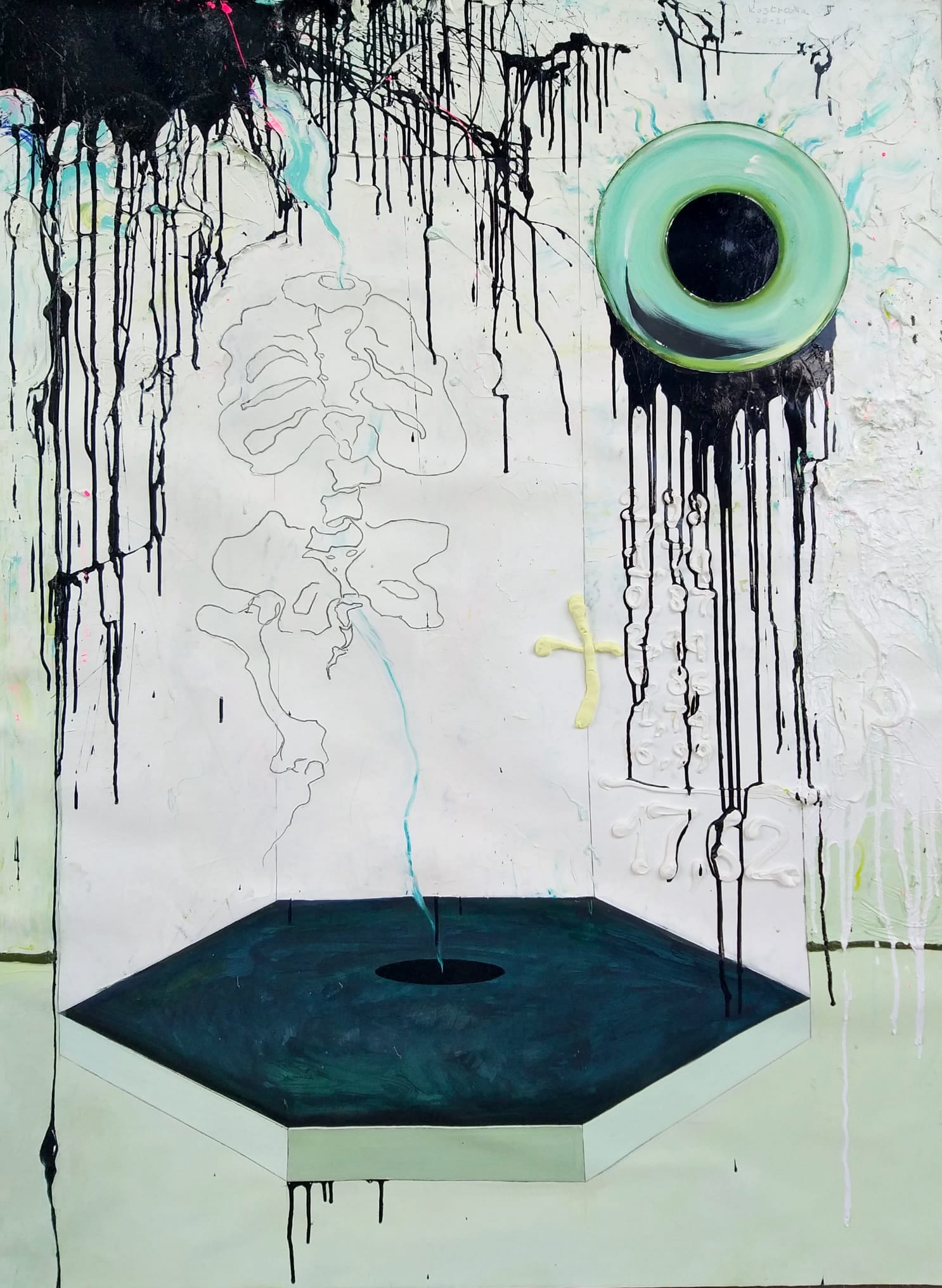
LIFE OVER DEATH . 2021
Oil, black enamel on Fabriano Accademia paper, laid down on canvas, 150 x 110 cm

LIFE OVER DEATH . 2021 / Fragment
Oil, black enamel on Fabriano Accademia paper, laid down on canvas, 150 x 110 cm

LIFE OVER DEATH . 2021 / Fragment
Oil, black enamel on Fabriano Accademia paper, laid down on canvas, 150 x 110 cm
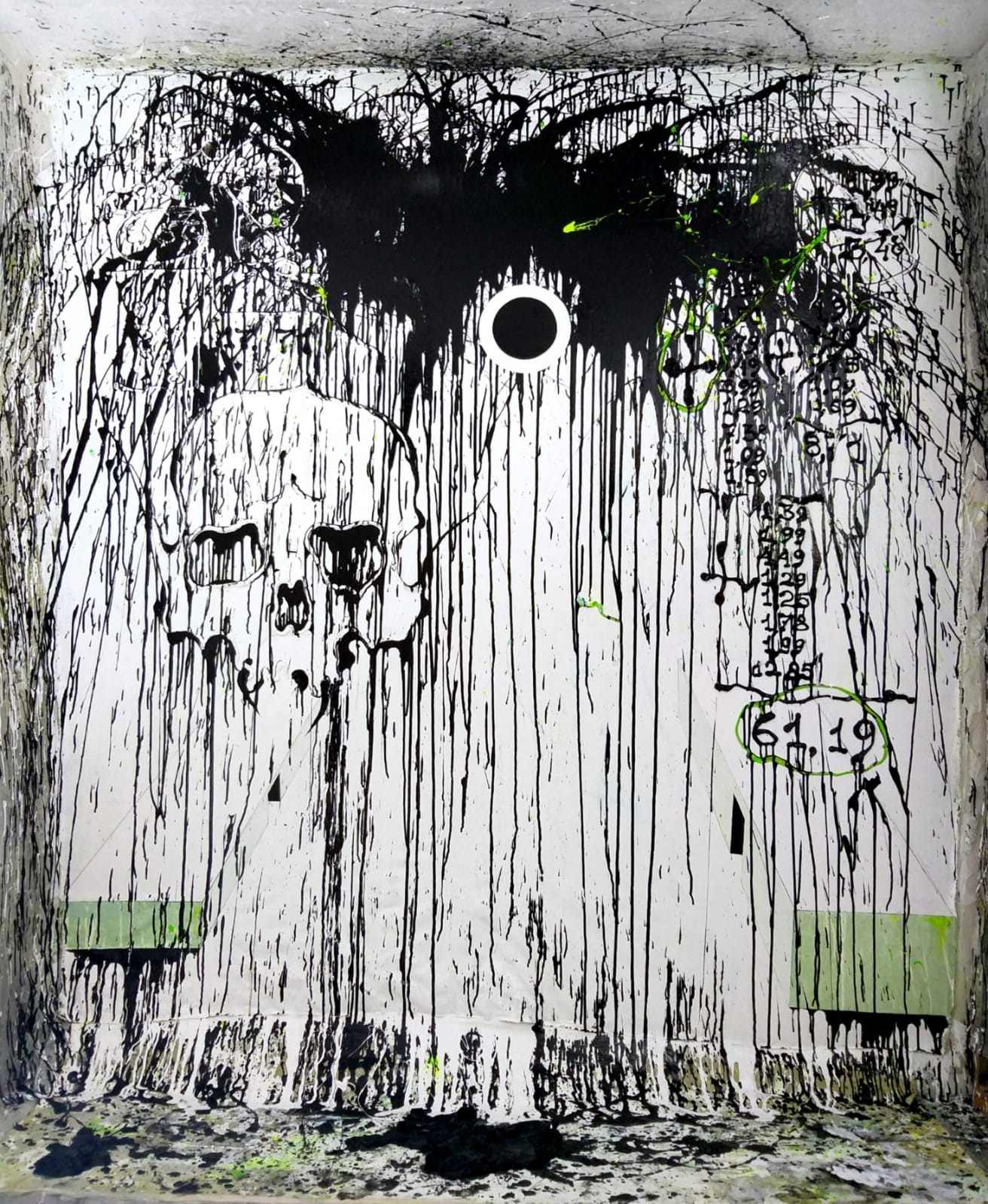
TIME OF DARKNESS . 2022
Oil, black enamel on canvas, 250 x 215 x 60 cm

TREE OF LIFE . 2023
Oil, black enamel on Fabriano Accademia paper, 240 x 150 cm
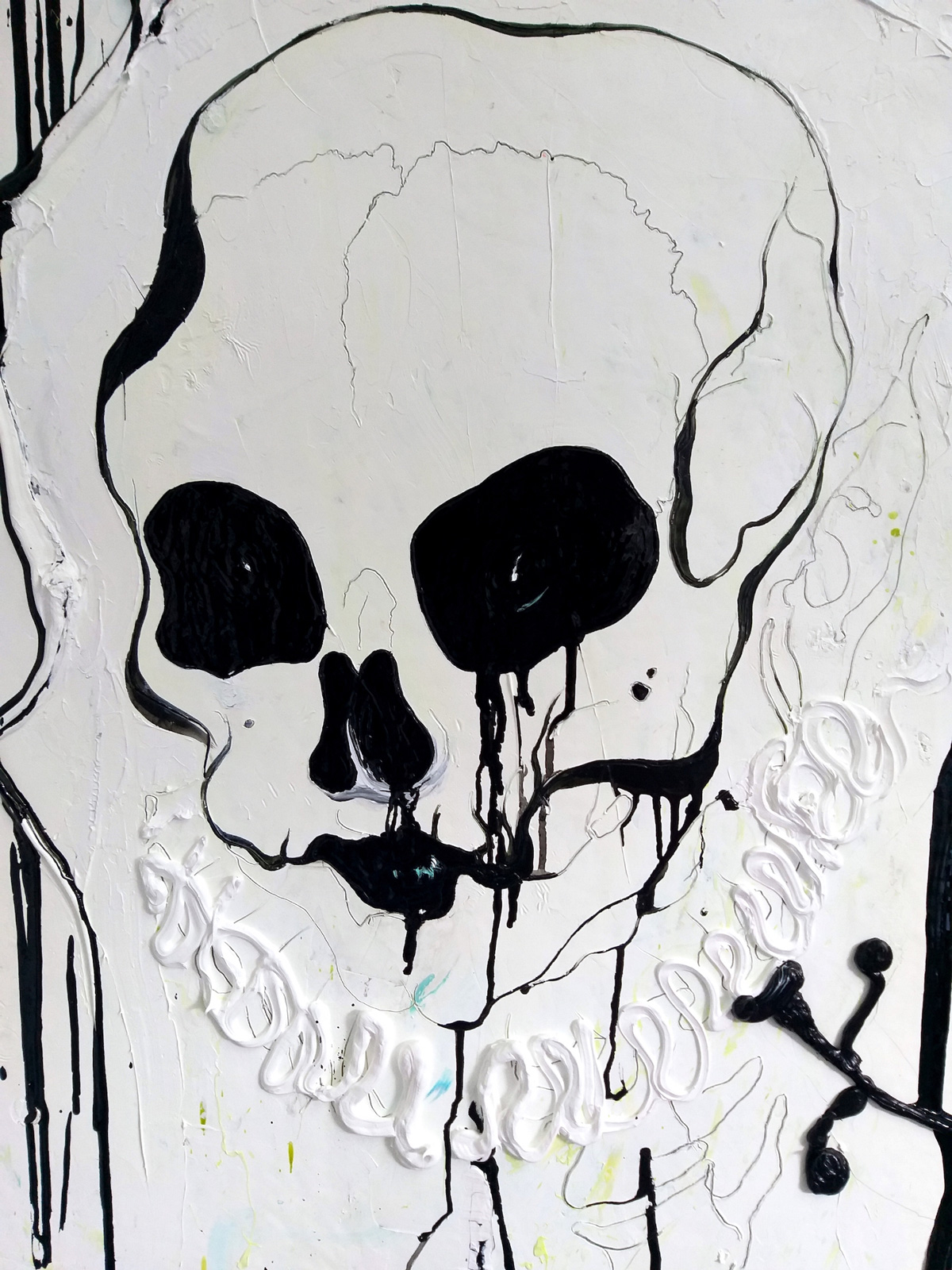
TREE OF LIFE . 2023 / Fragment
Oil, black enamel on Fabriano Accademia paper, 240 x 150 cm
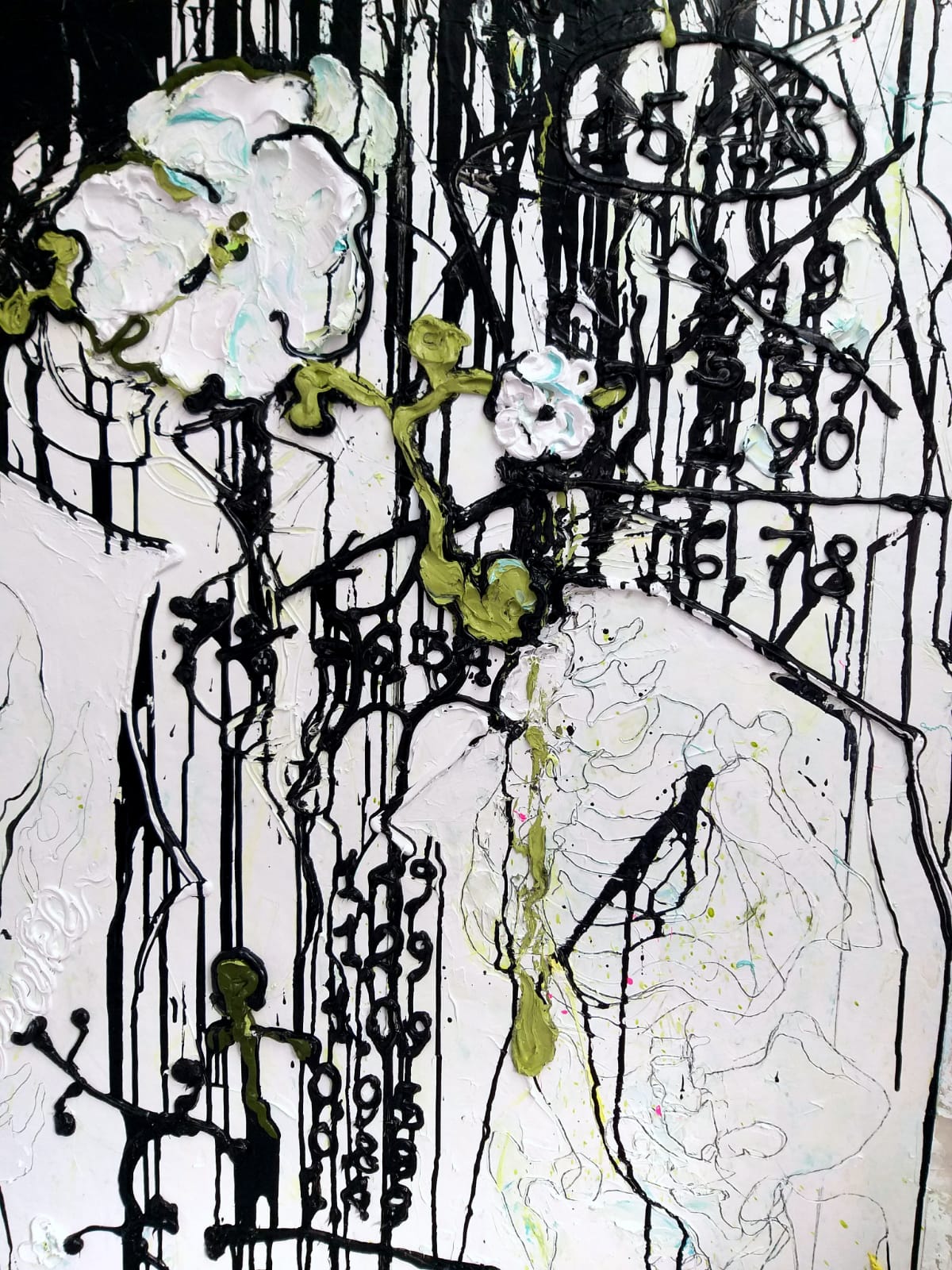
TREE OF LIFE . 2023 / Fragment
Oil, black enamel on Fabriano Accademia paper, 240 x 150 cm
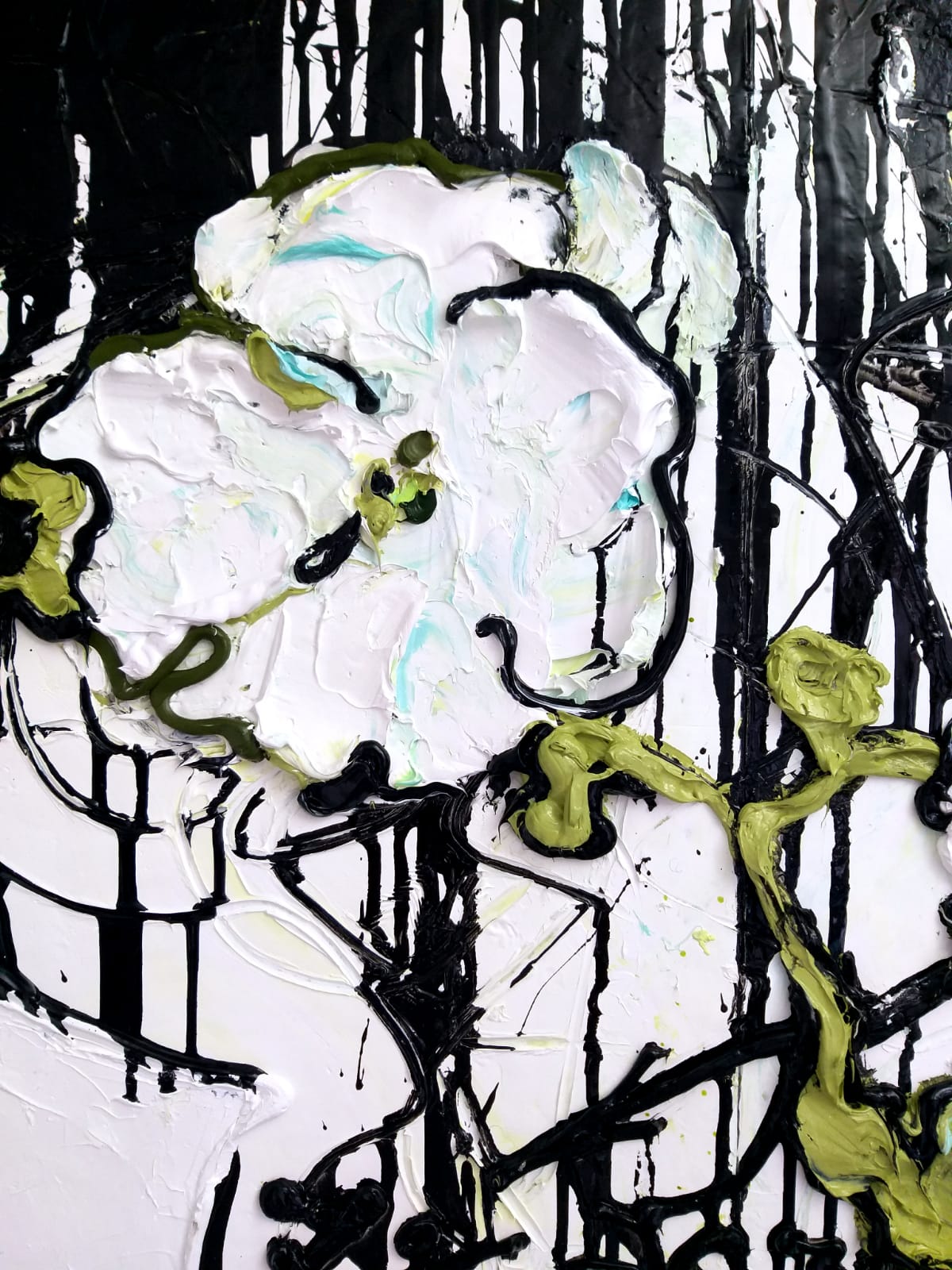
TREE OF LIFE . 2023 / Fragment
Oil, black enamel on Fabriano Accademia paper, 240 x 150 cm
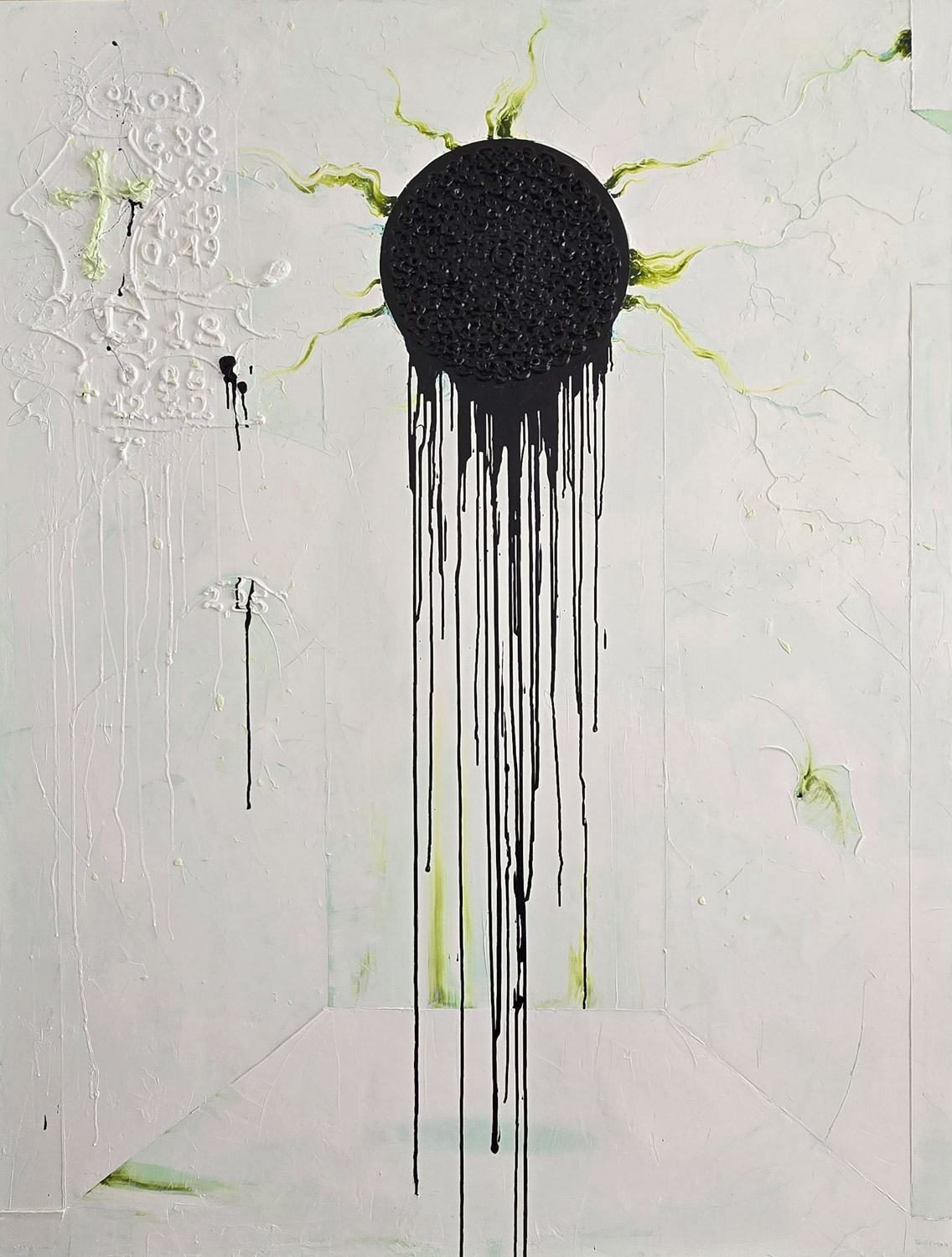
THE LAST DROP . 2025
Oil, black enamel on canvas, 200 x 150 cm

THE LAST DROP . 2025 / Fragment
Oil, black enamel on canvas, 200 x 150 cm
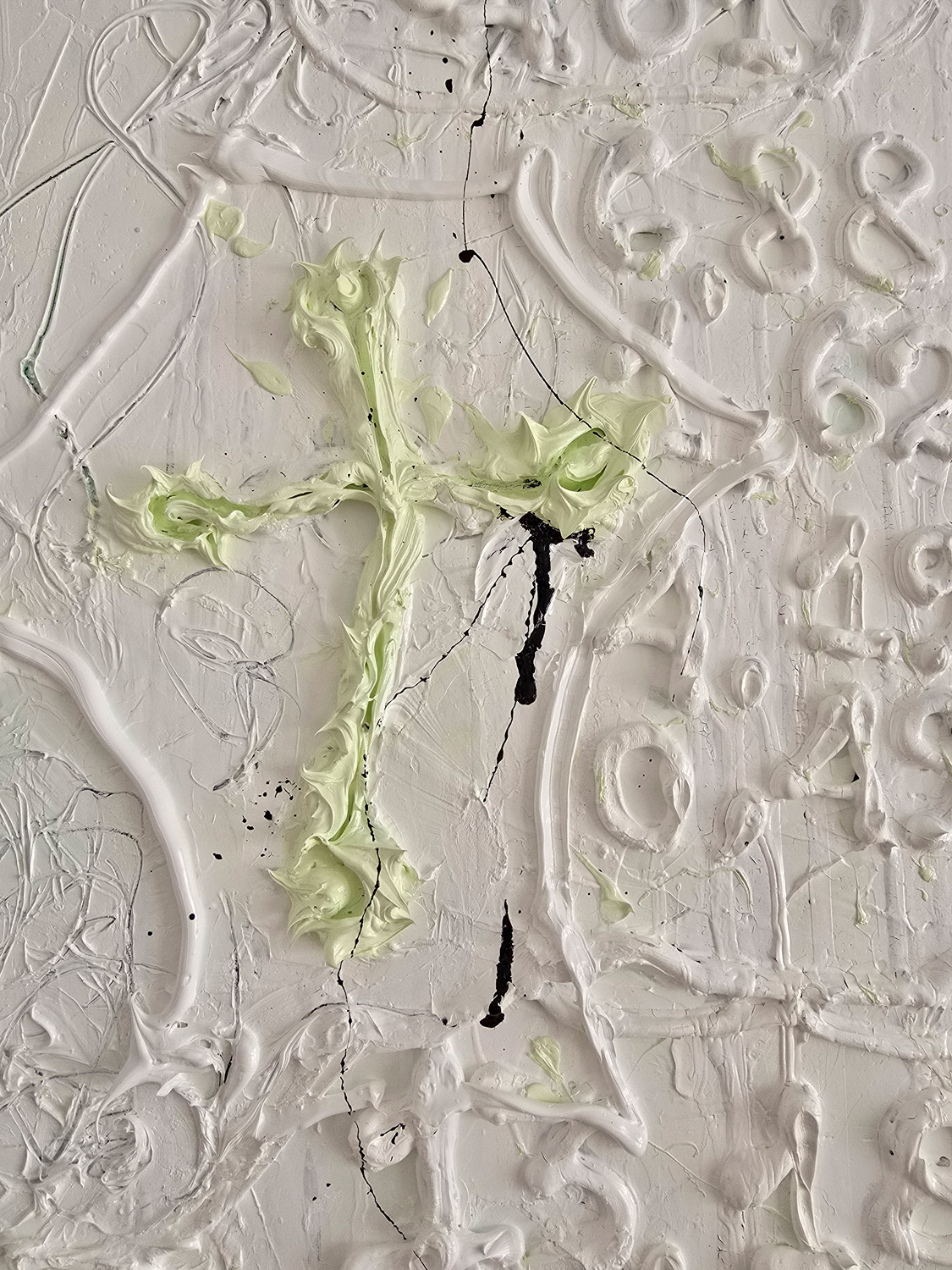
THE LAST DROP . 2025 / Fragment
Oil, black enamel on canvas, 200 x 150 cm
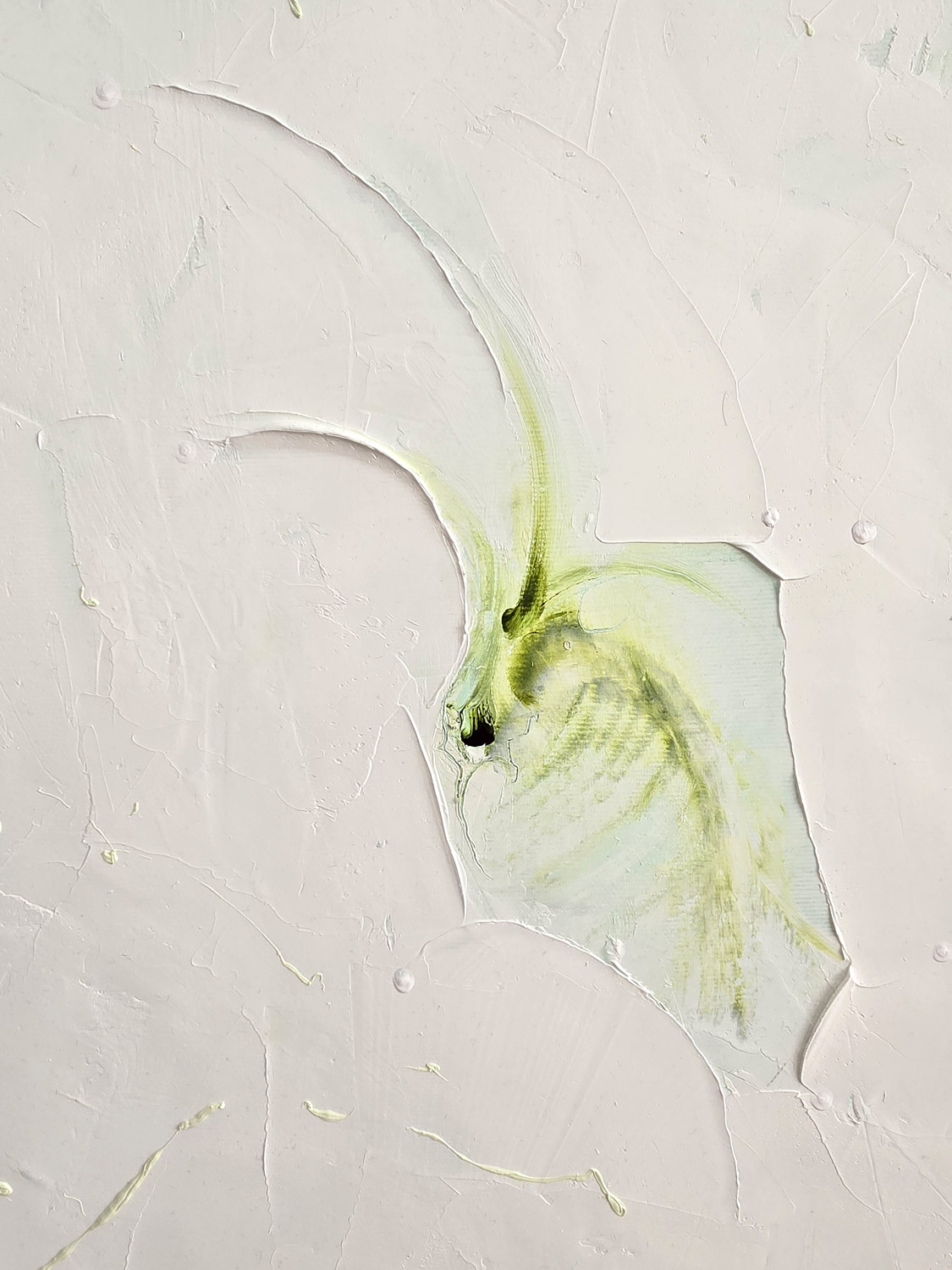
THE LAST DROP . 2025 / Fragment
Oil, black enamel on canvas, 200 x 150 cm
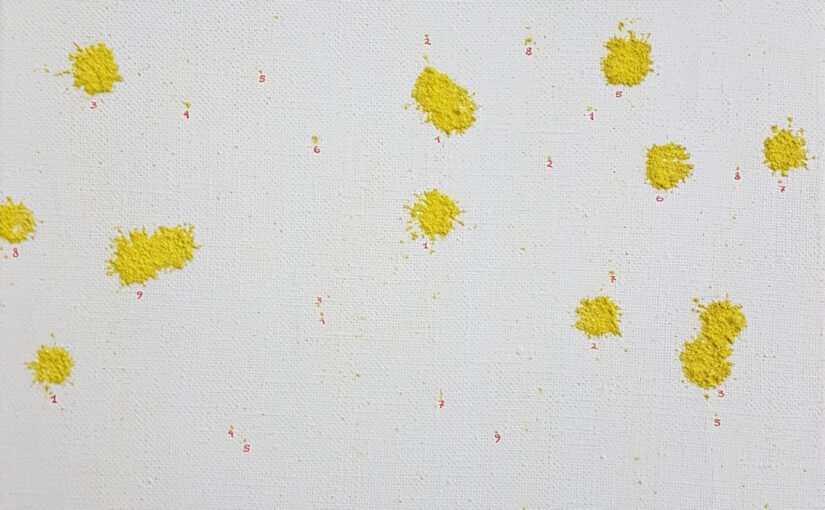
Booth 401contemporary, Berlin
Art Fair, Cologne, Germany
22 – 26 November 2017

Booth 401contemporary, Berlin
Art Fair, Turin, Italy
2 – 5 November 2017
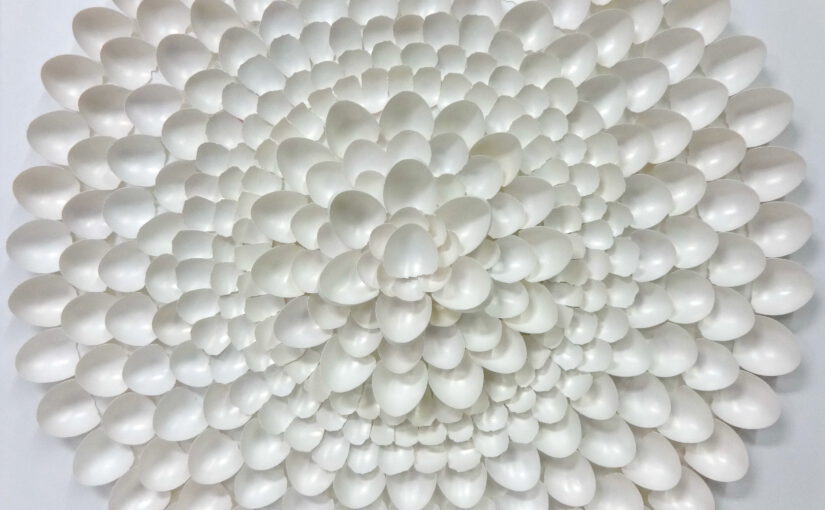
Reiter Gallery, Berlin
Group exhibition
15 July – 12 August 2017
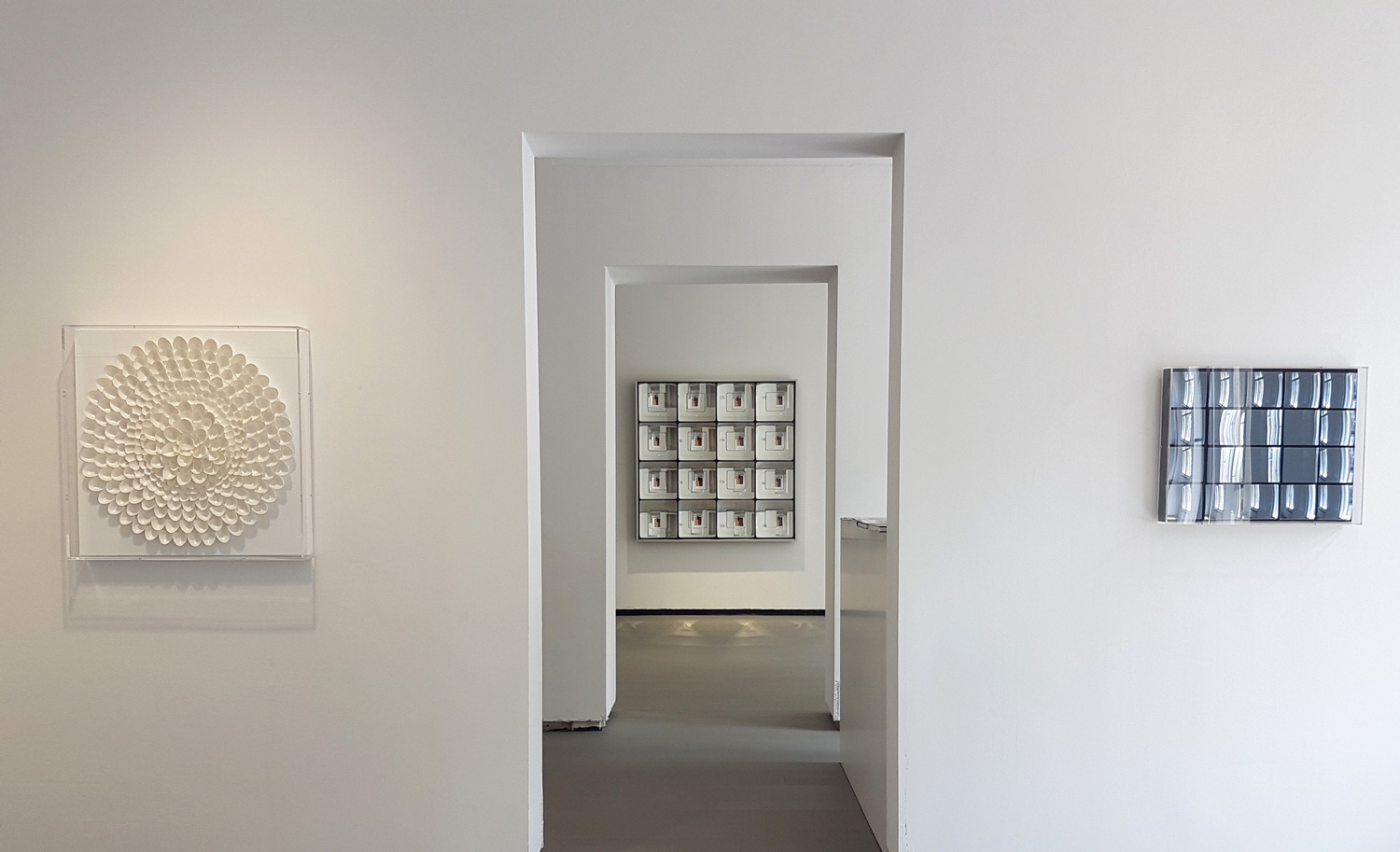

Ca’Foscari Zattere, Venice, Italy
Group exhibition
13 May – 28 June 2017
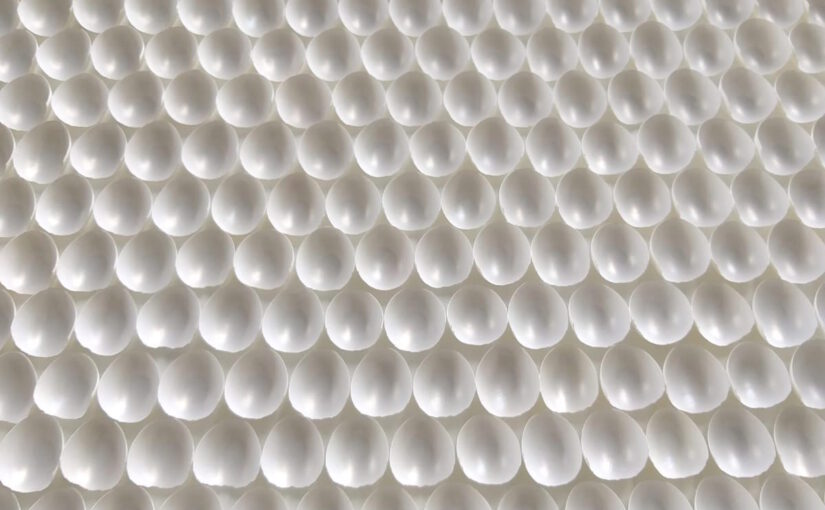
The State Russian Museum, Saint Petersburg, Russia
Group exhibition
7 April – 7 August 2017
© 2025 Alexei Kostroma · All rights reserved – Datenschutz | Impressum
© 2025 Alexei Kostroma
All rights reserved
Datenschutz | Impressum